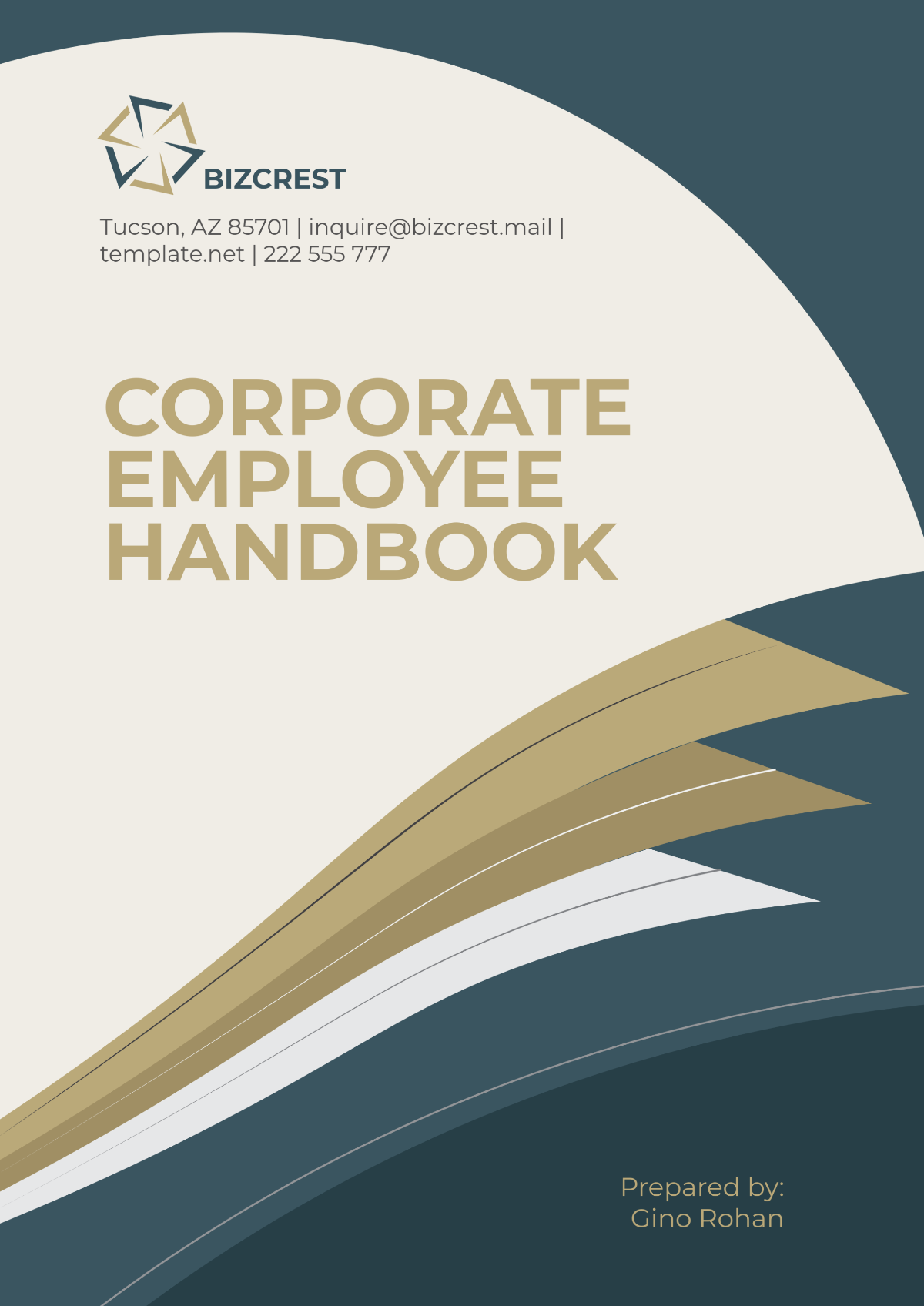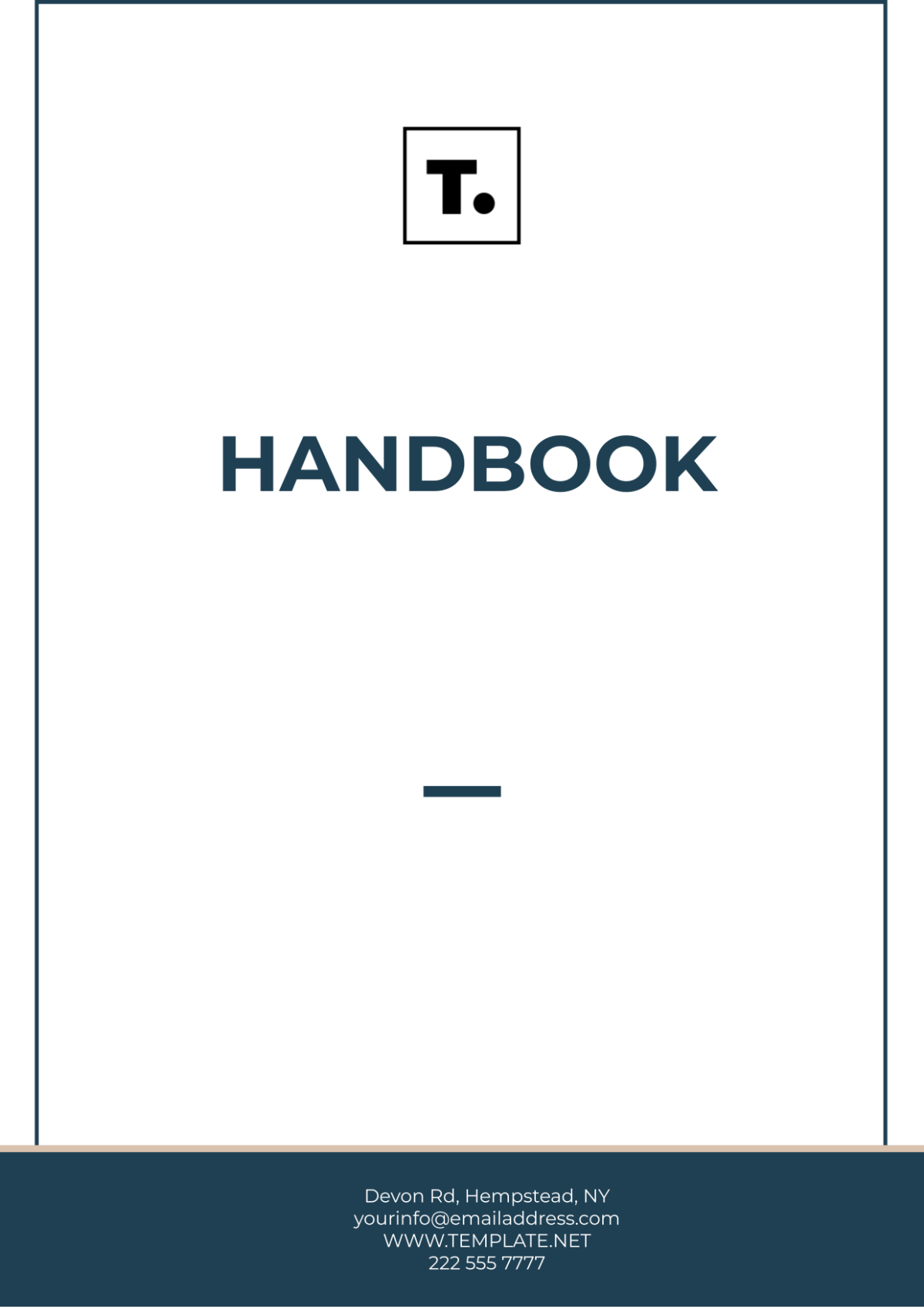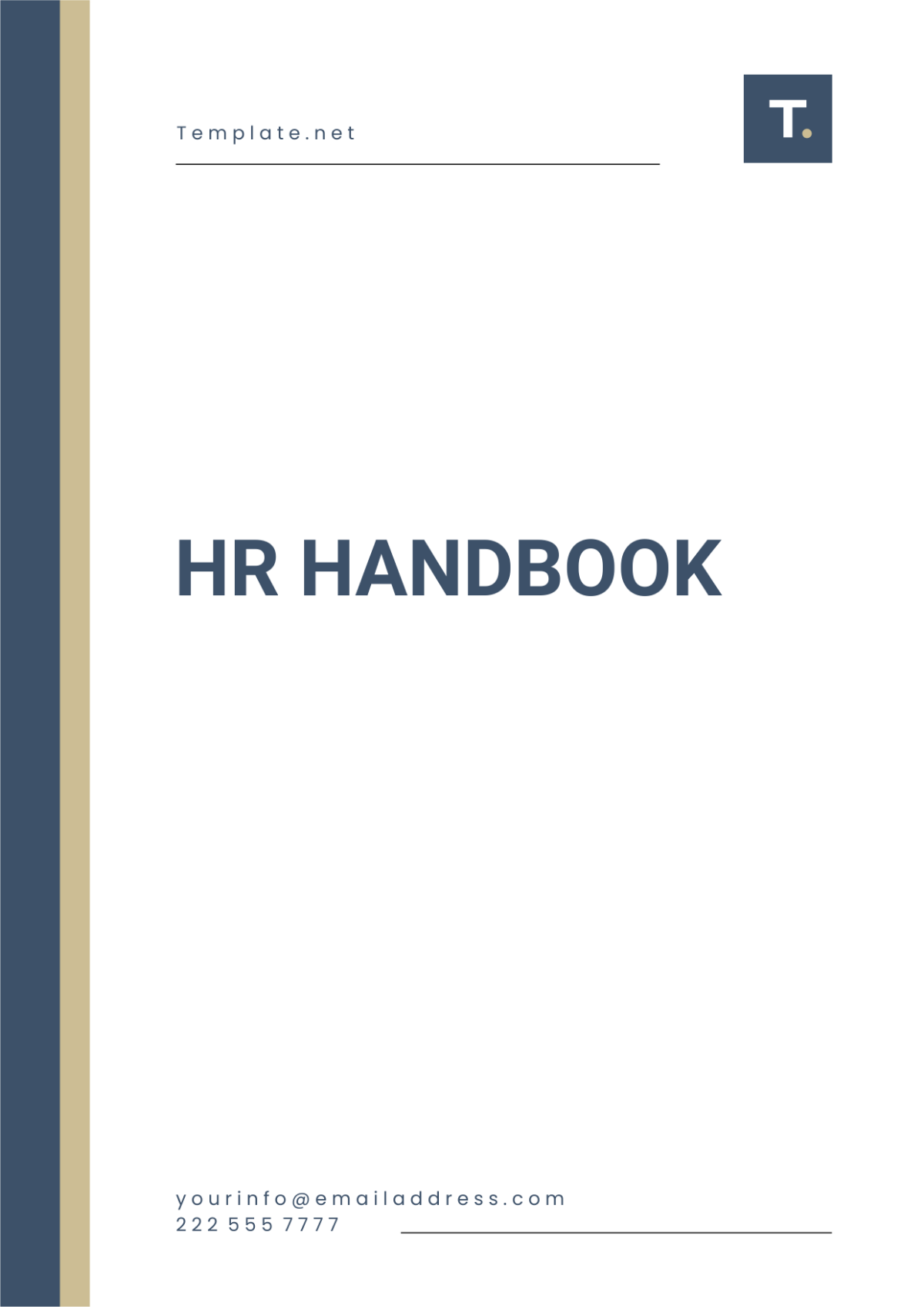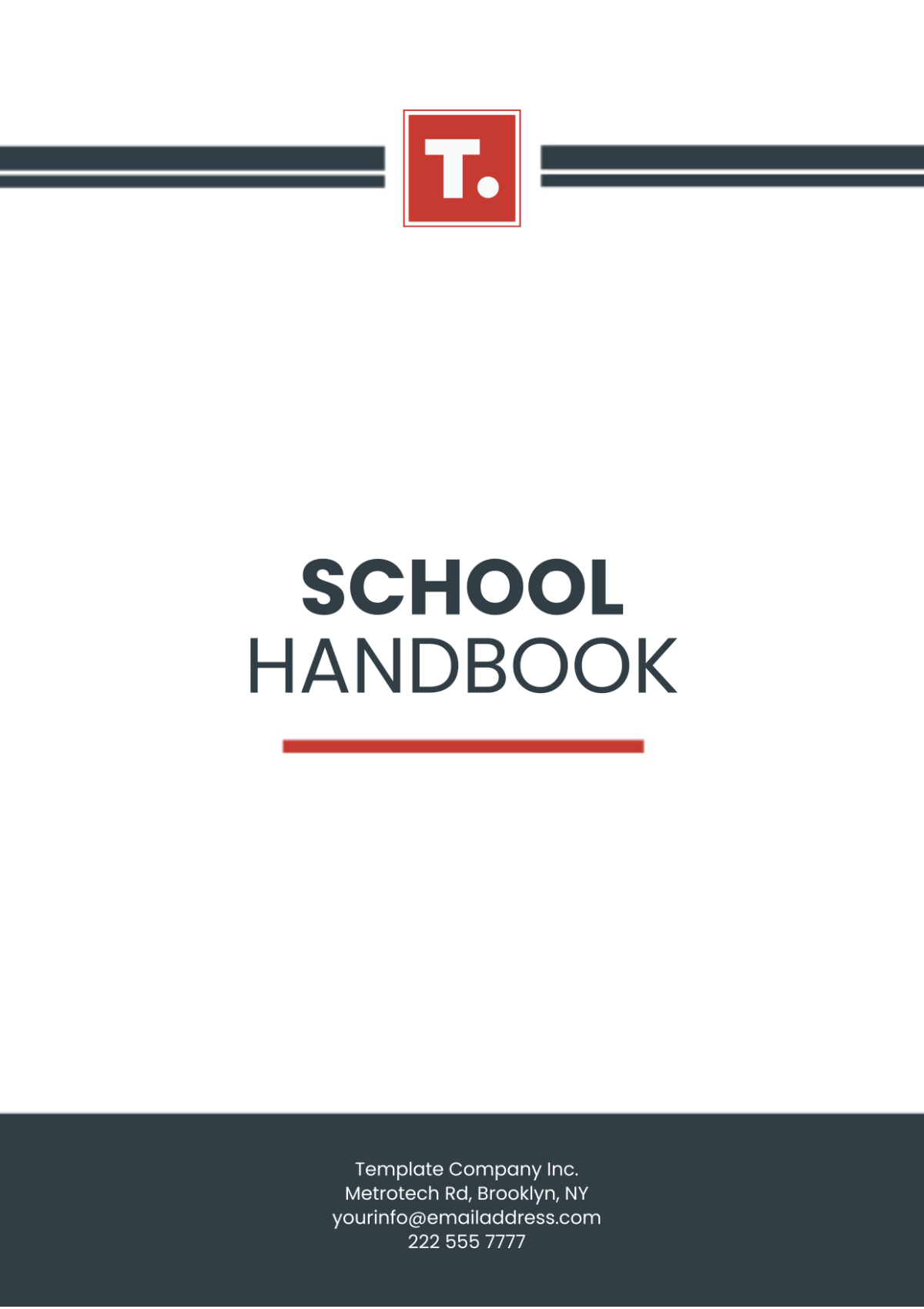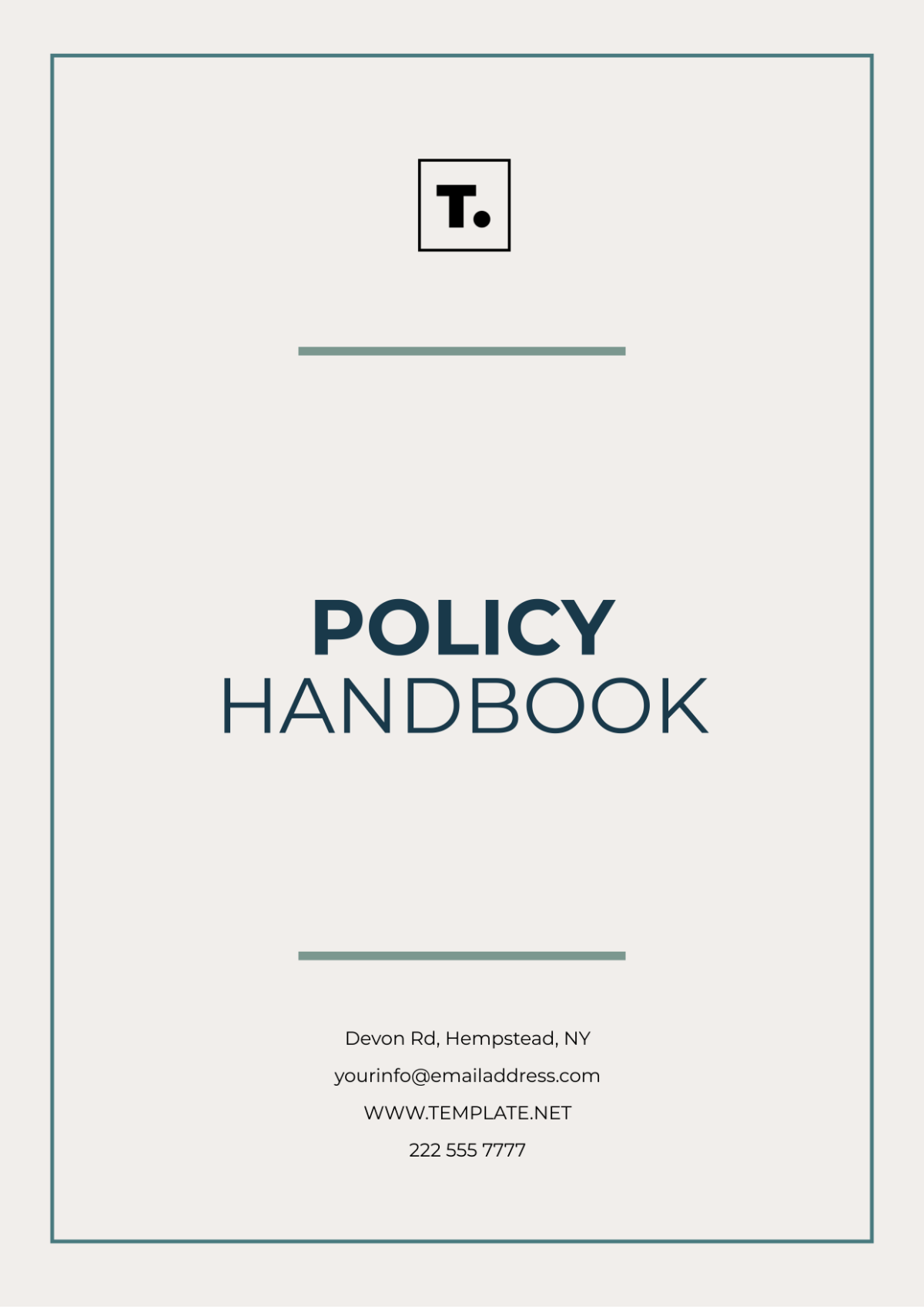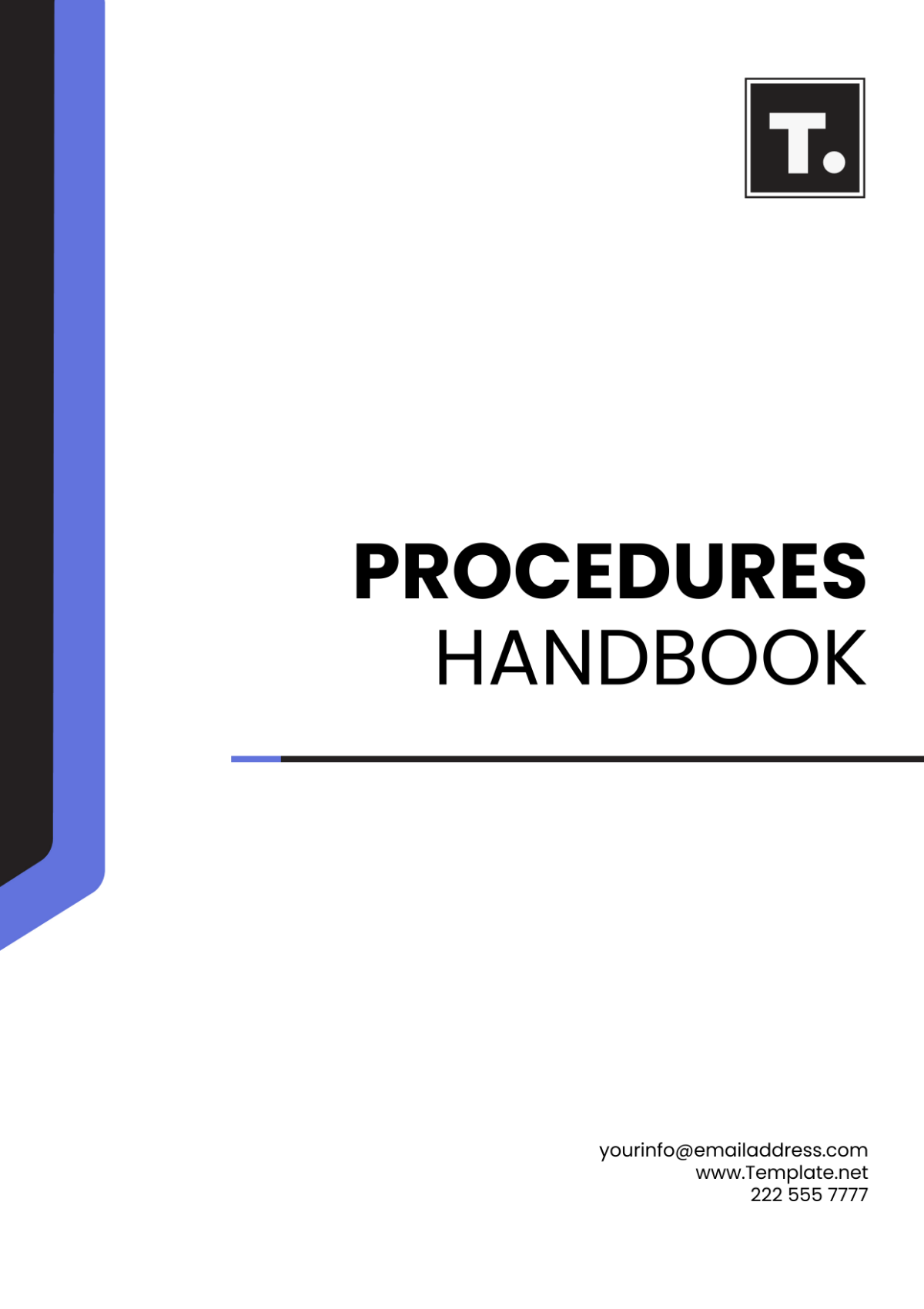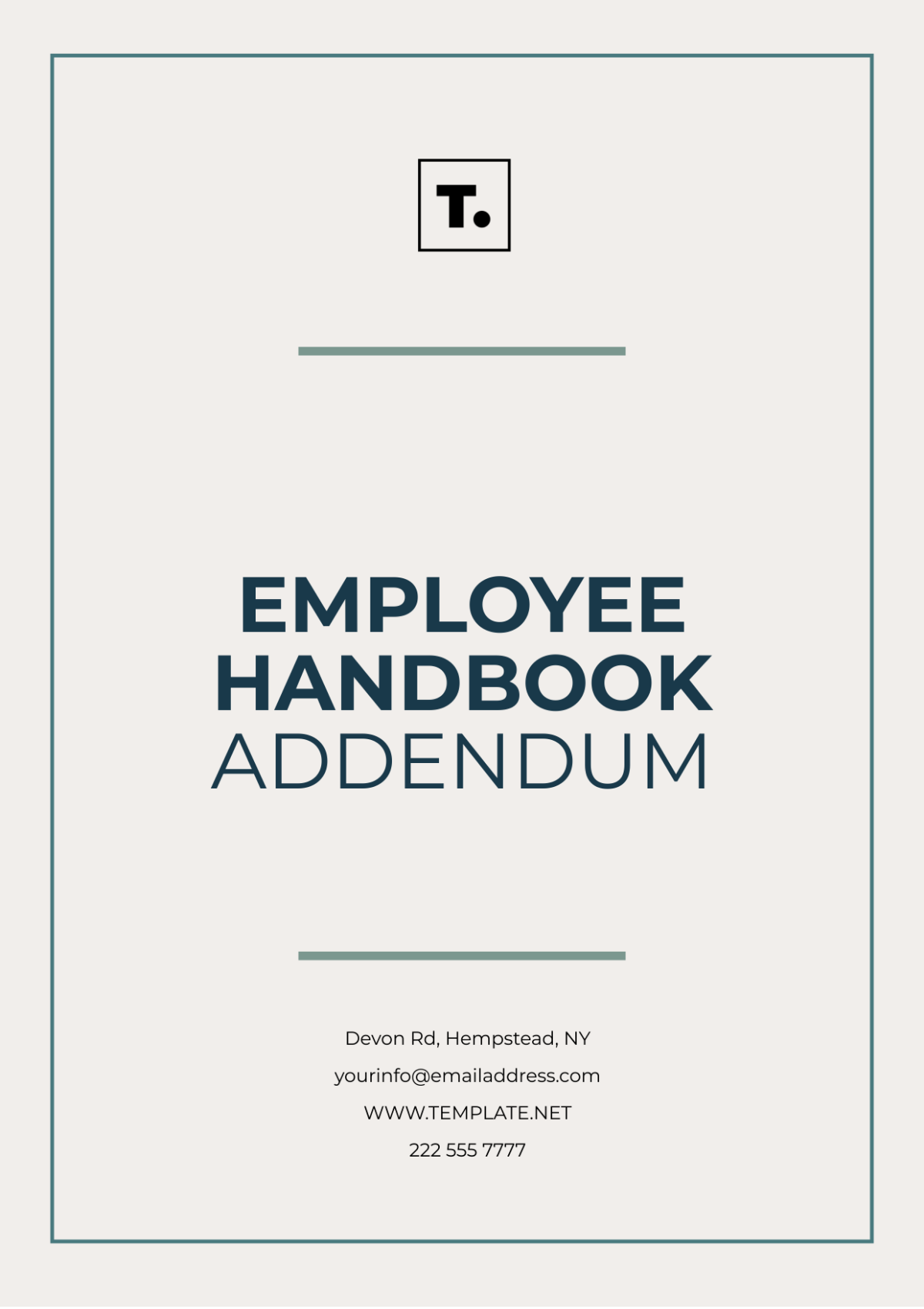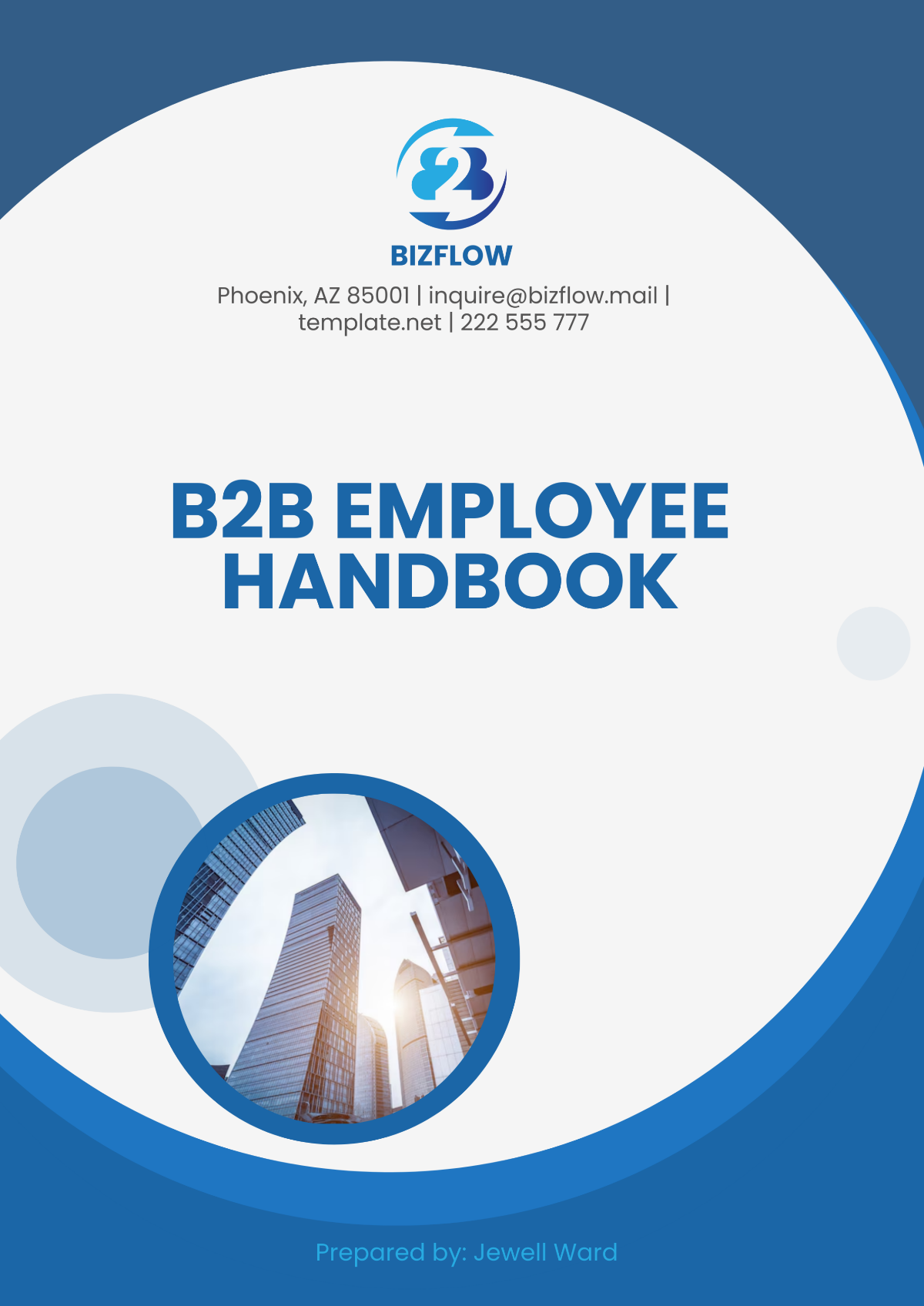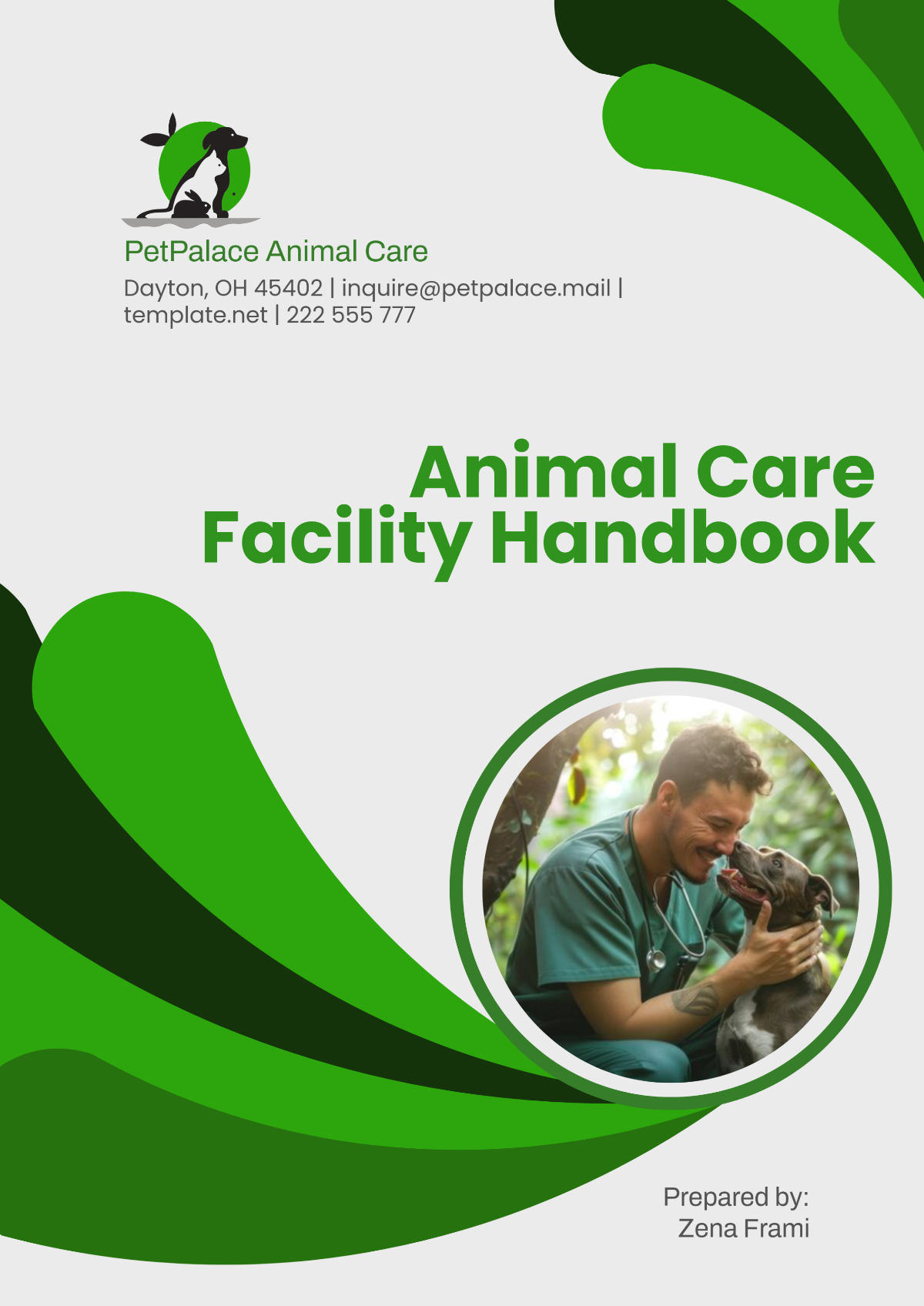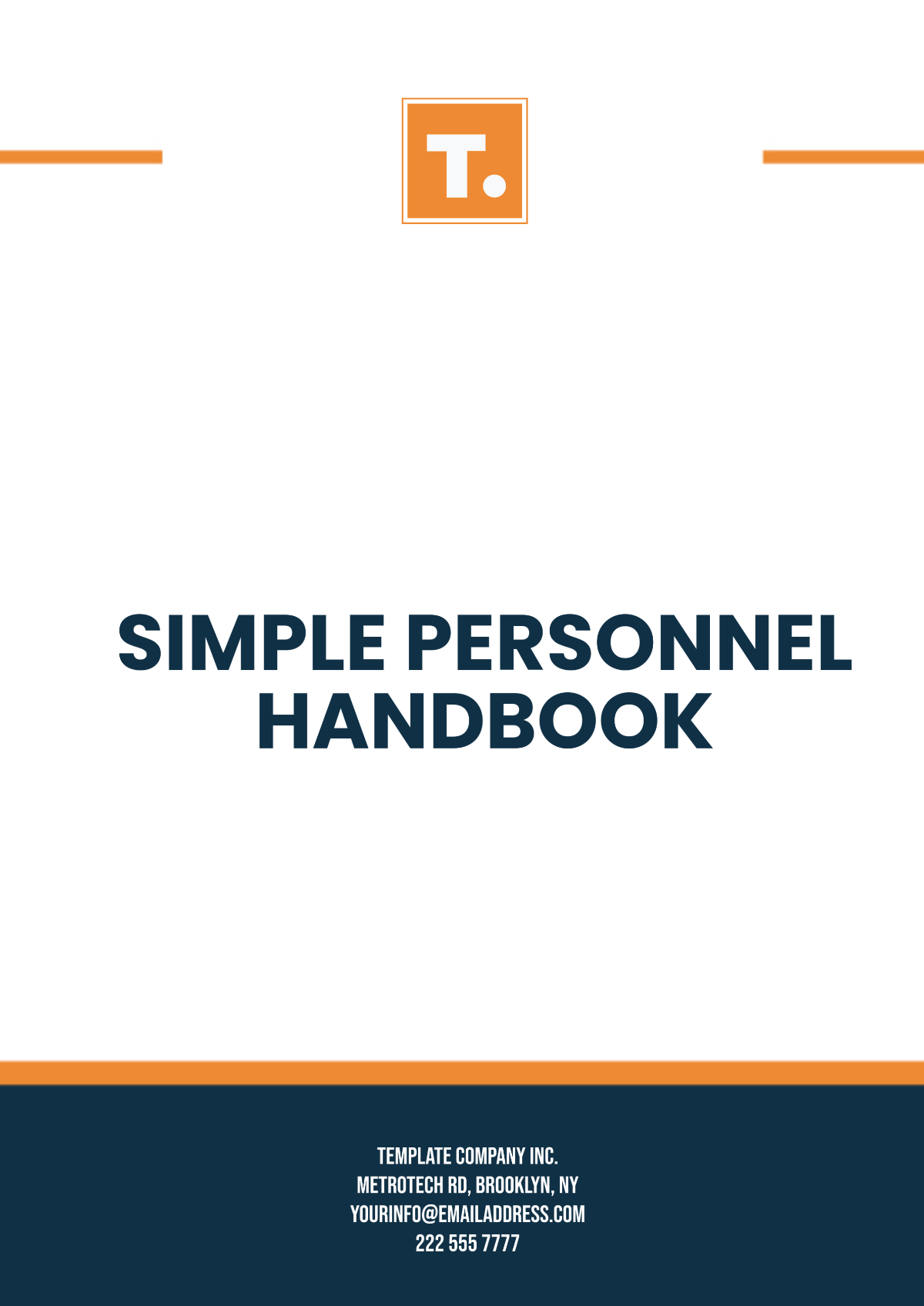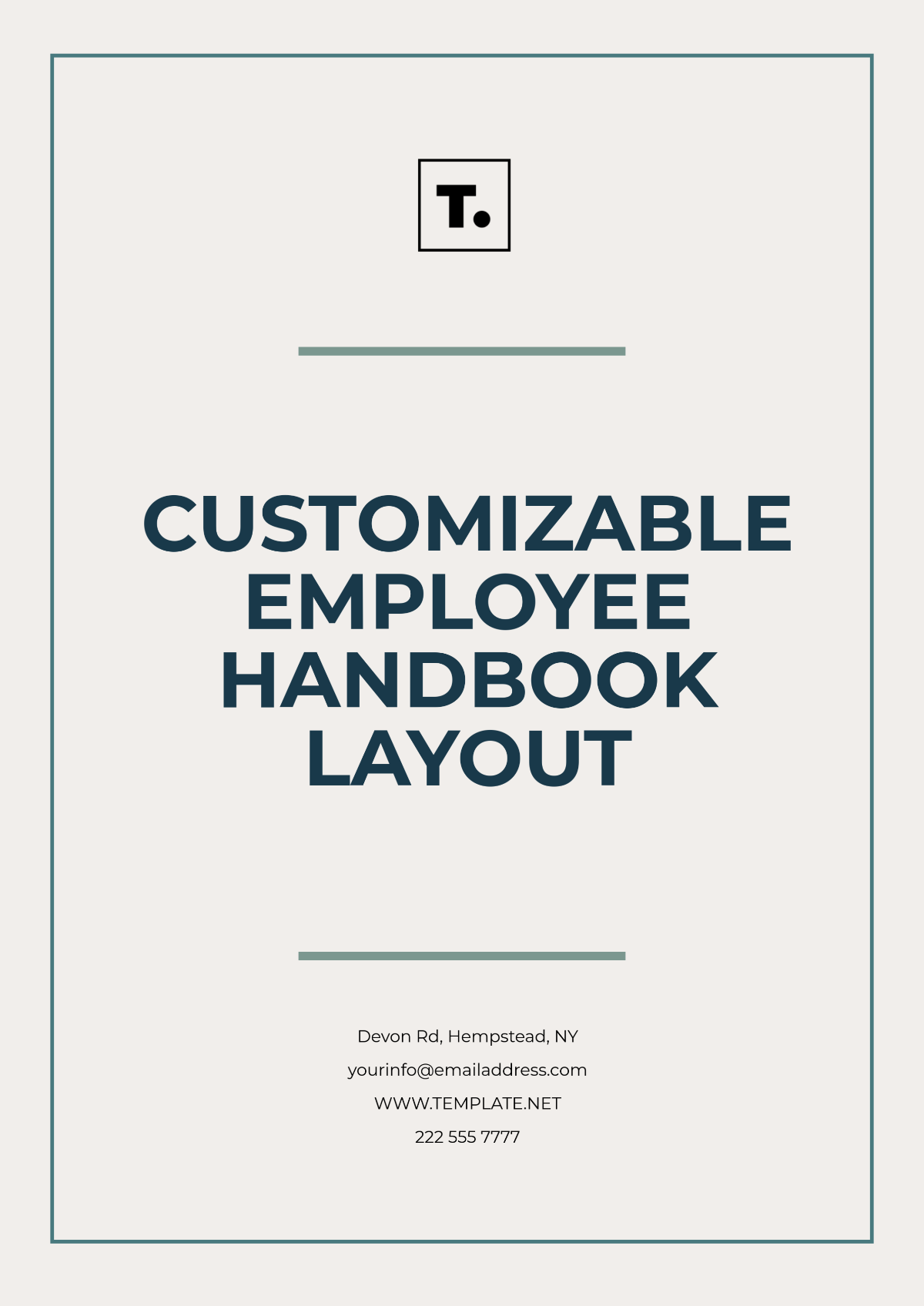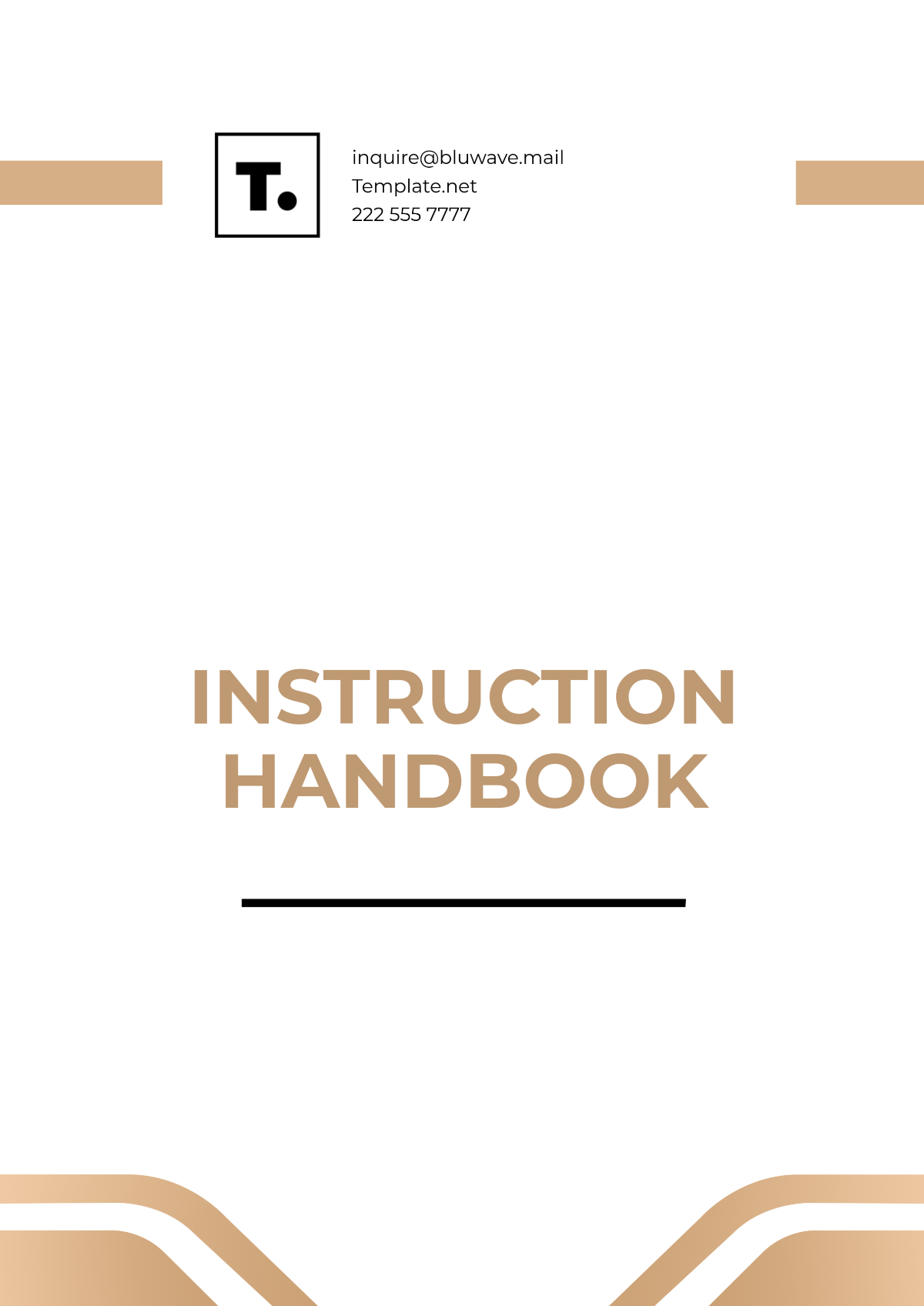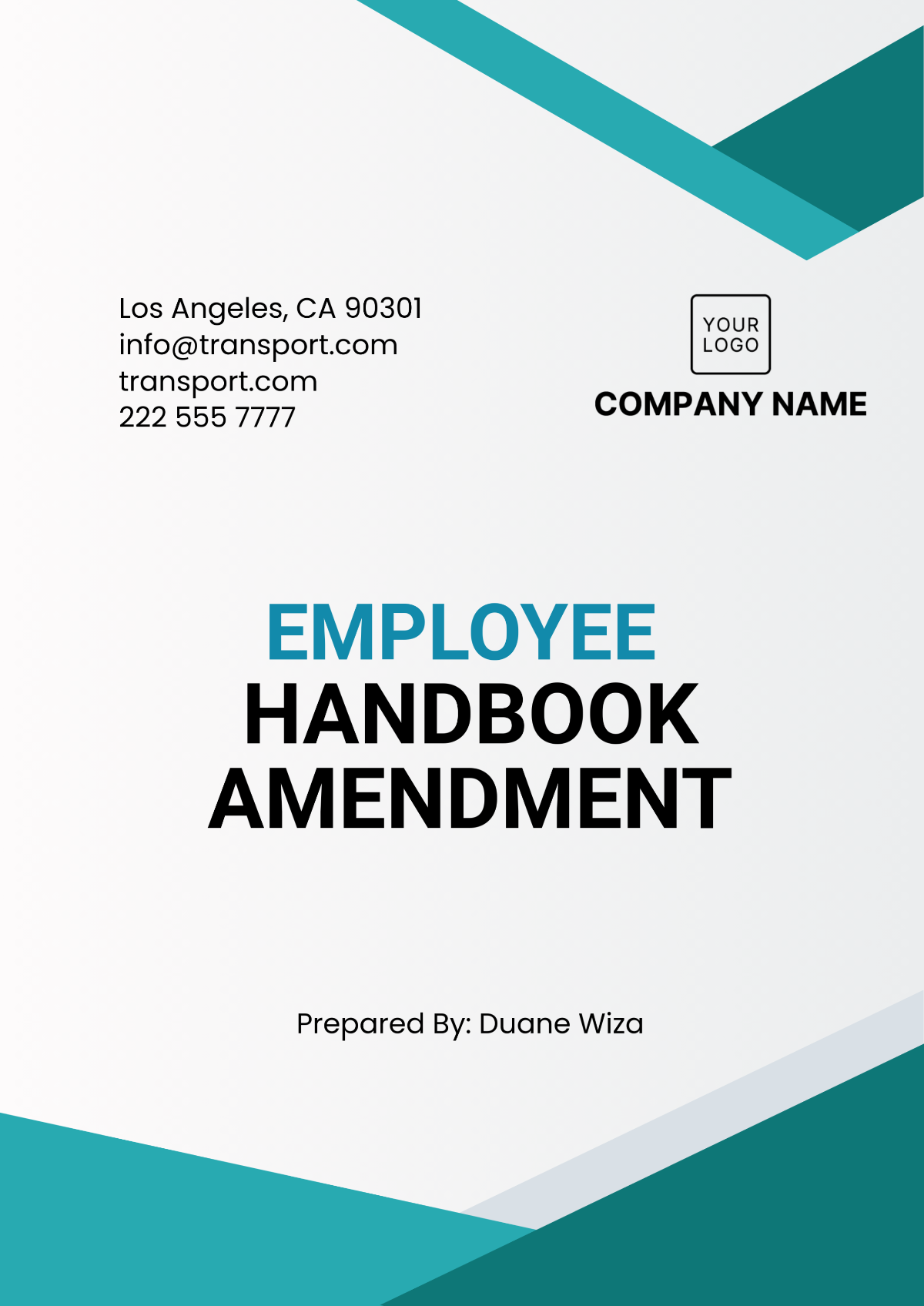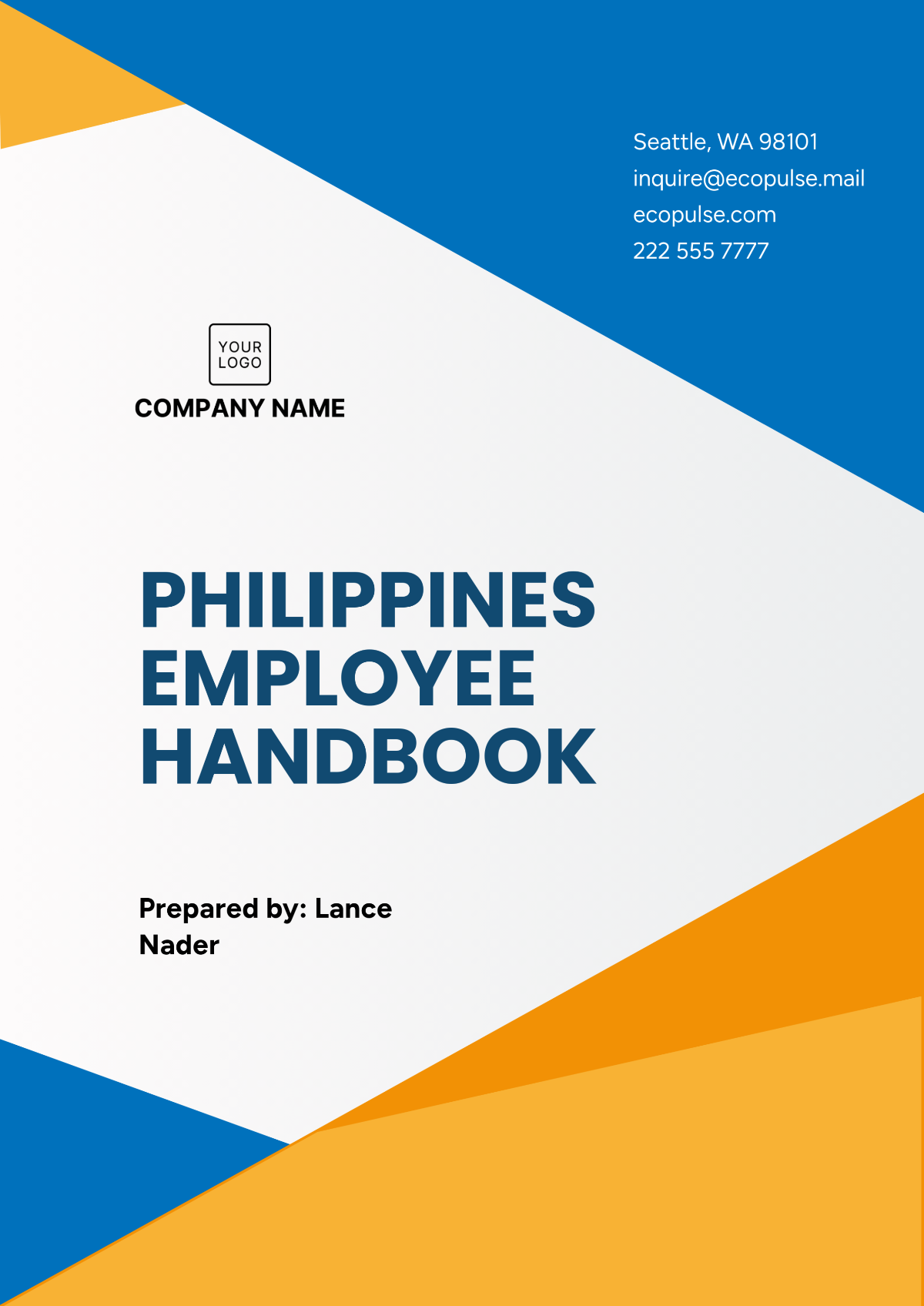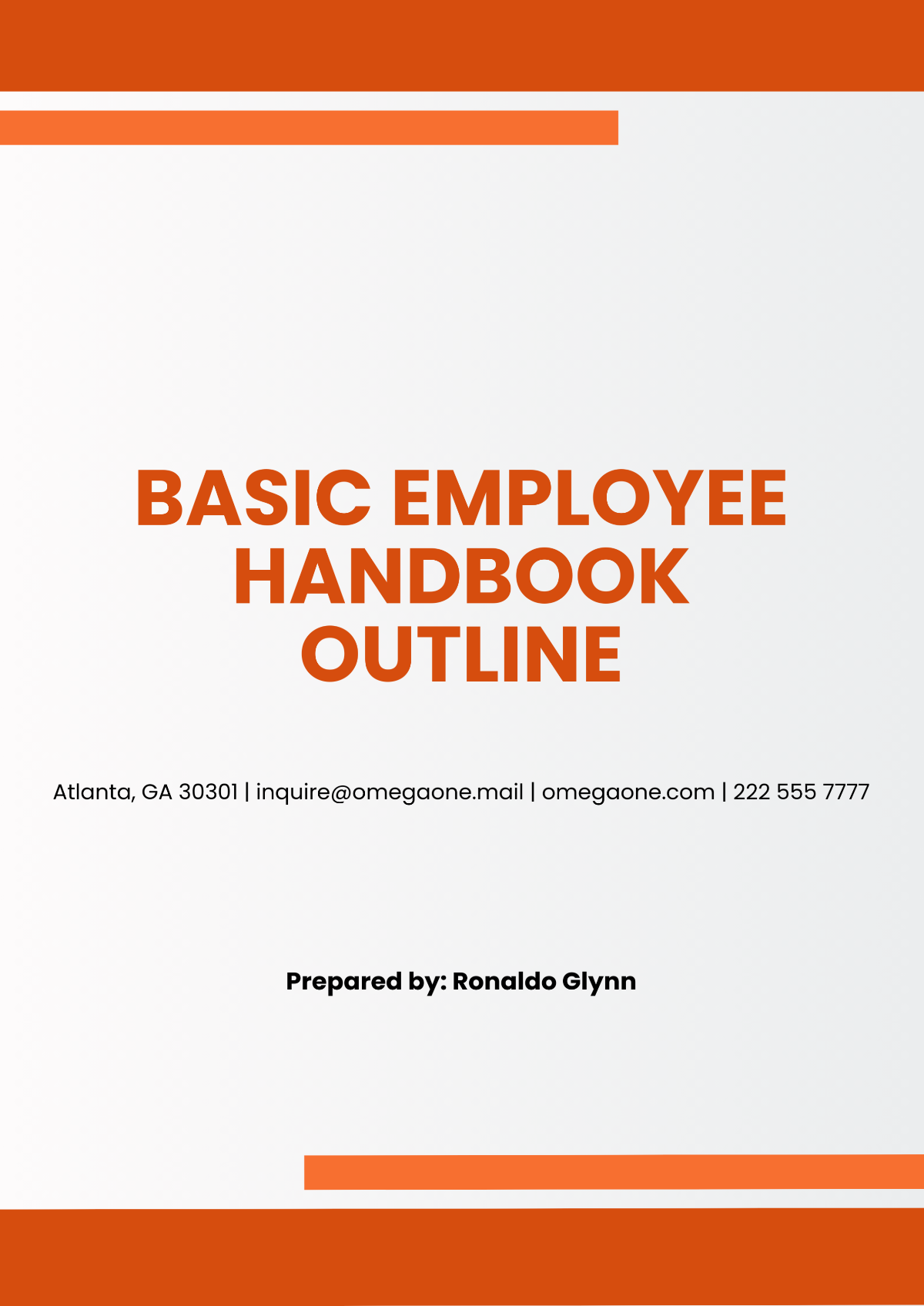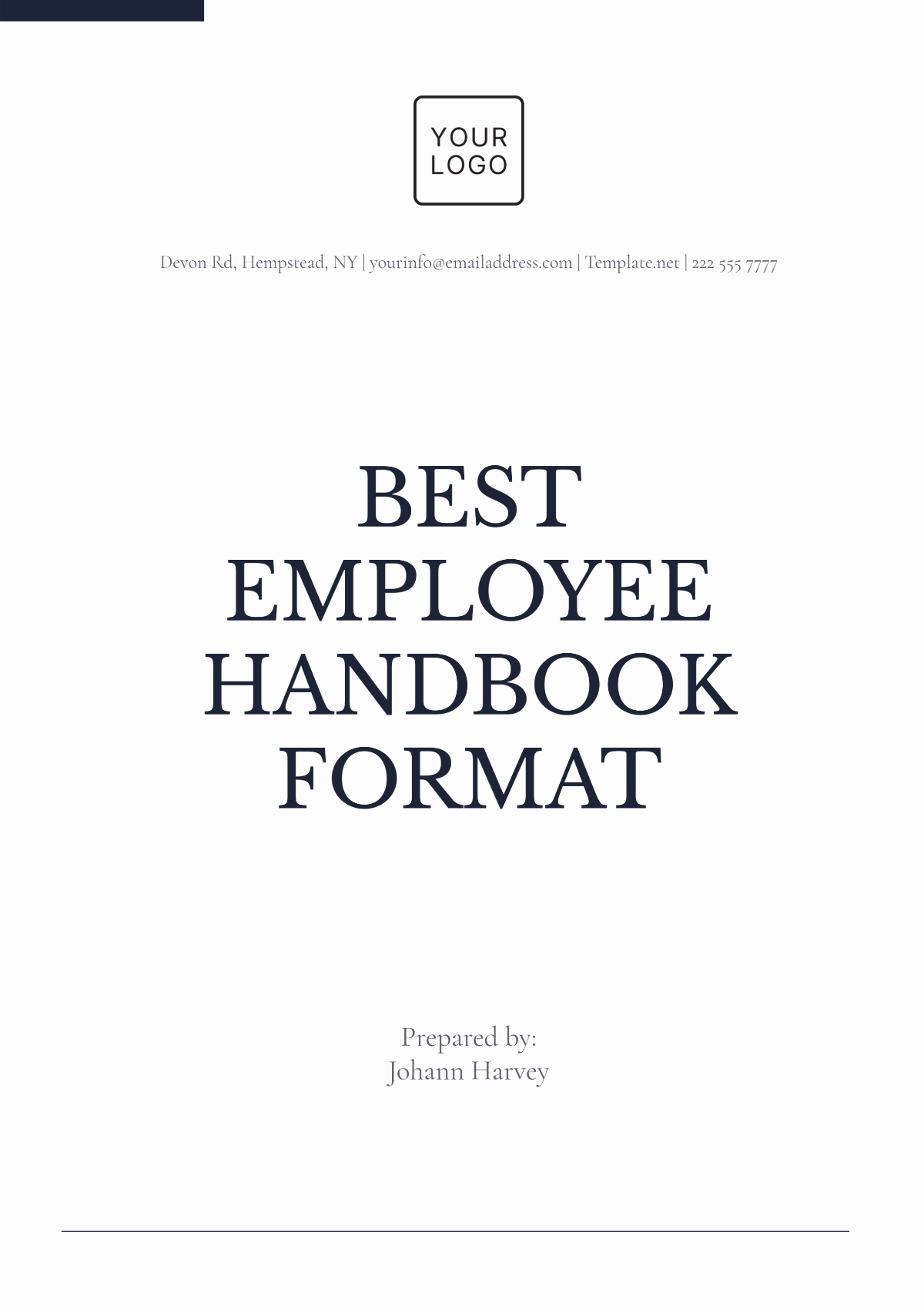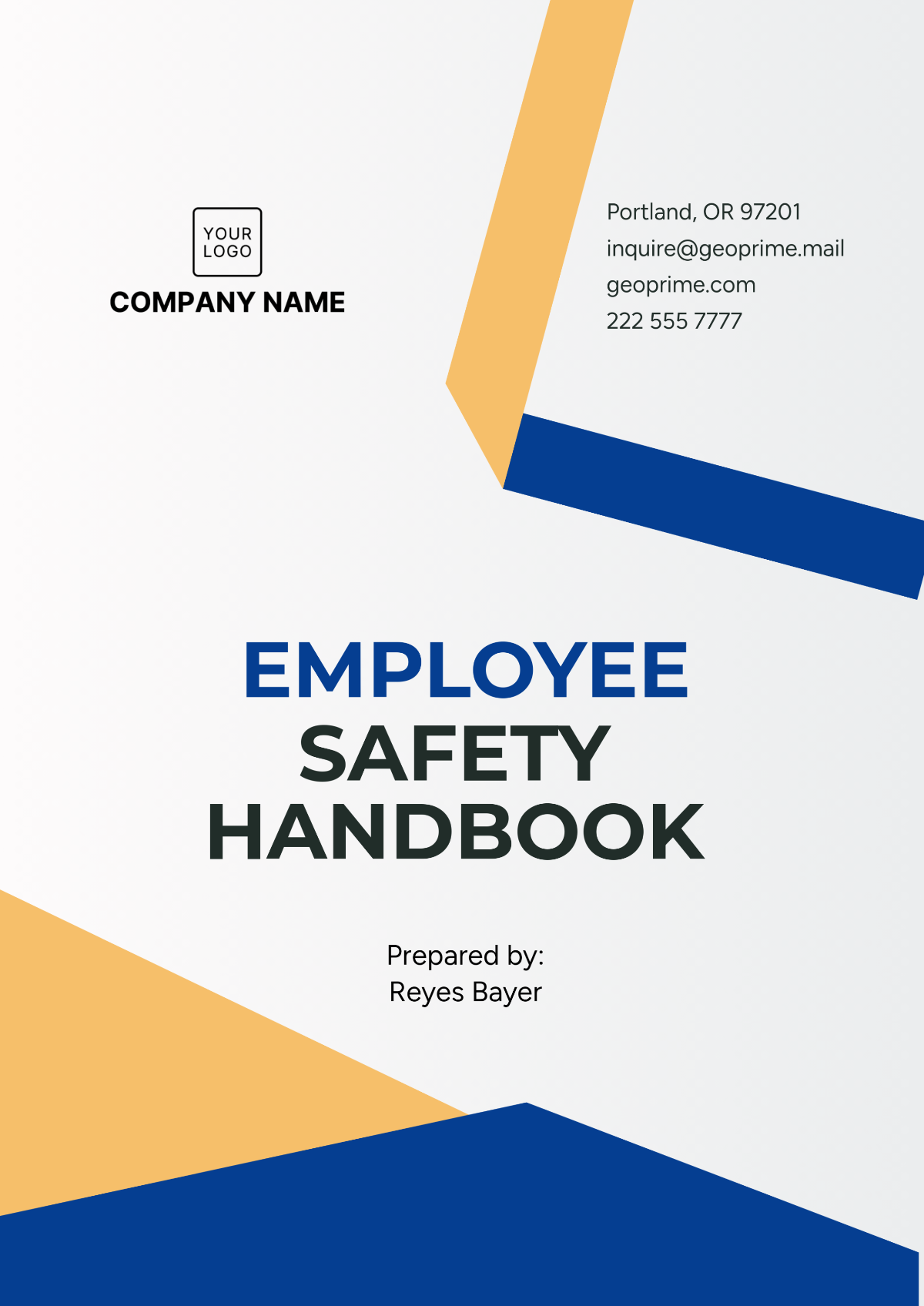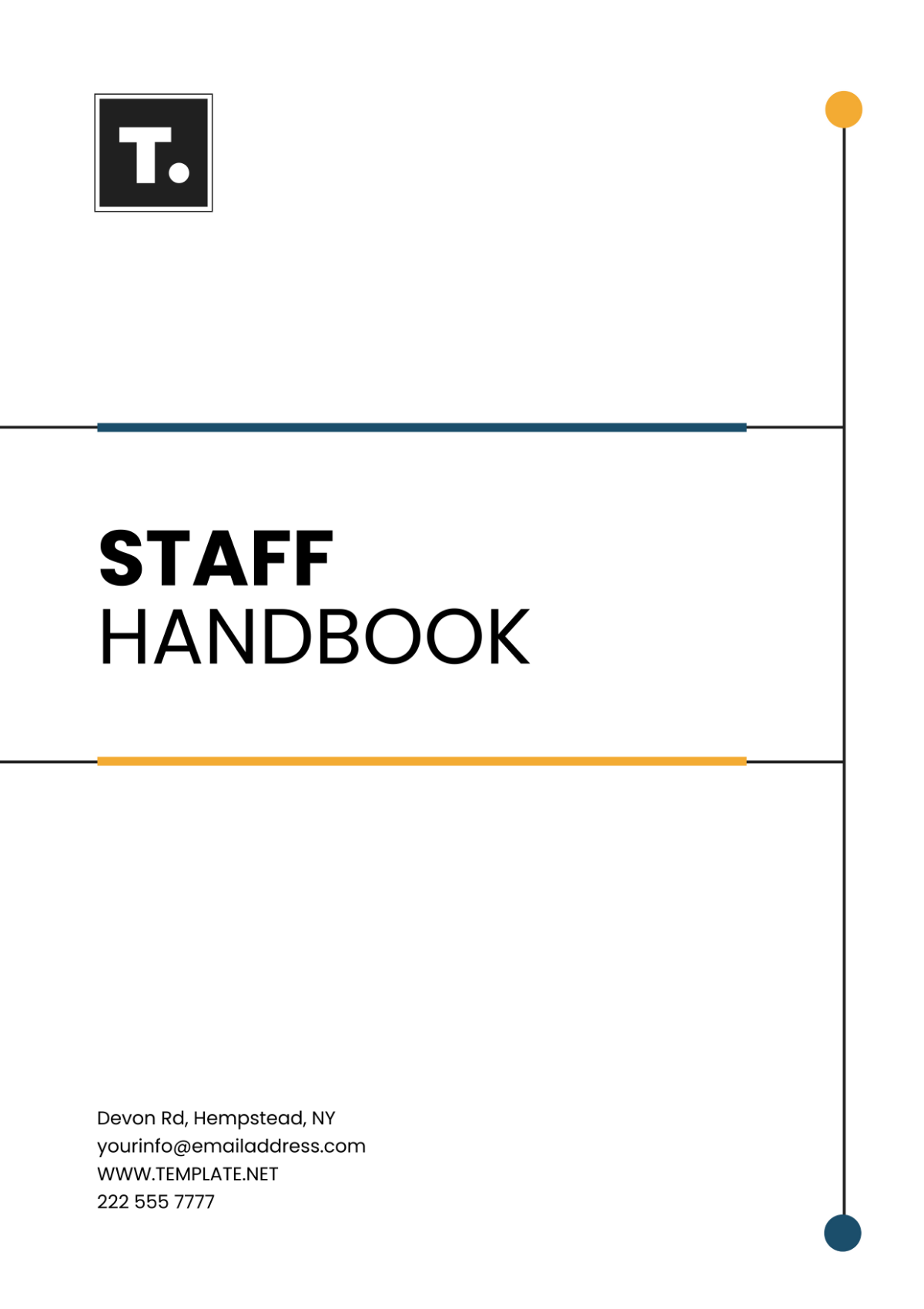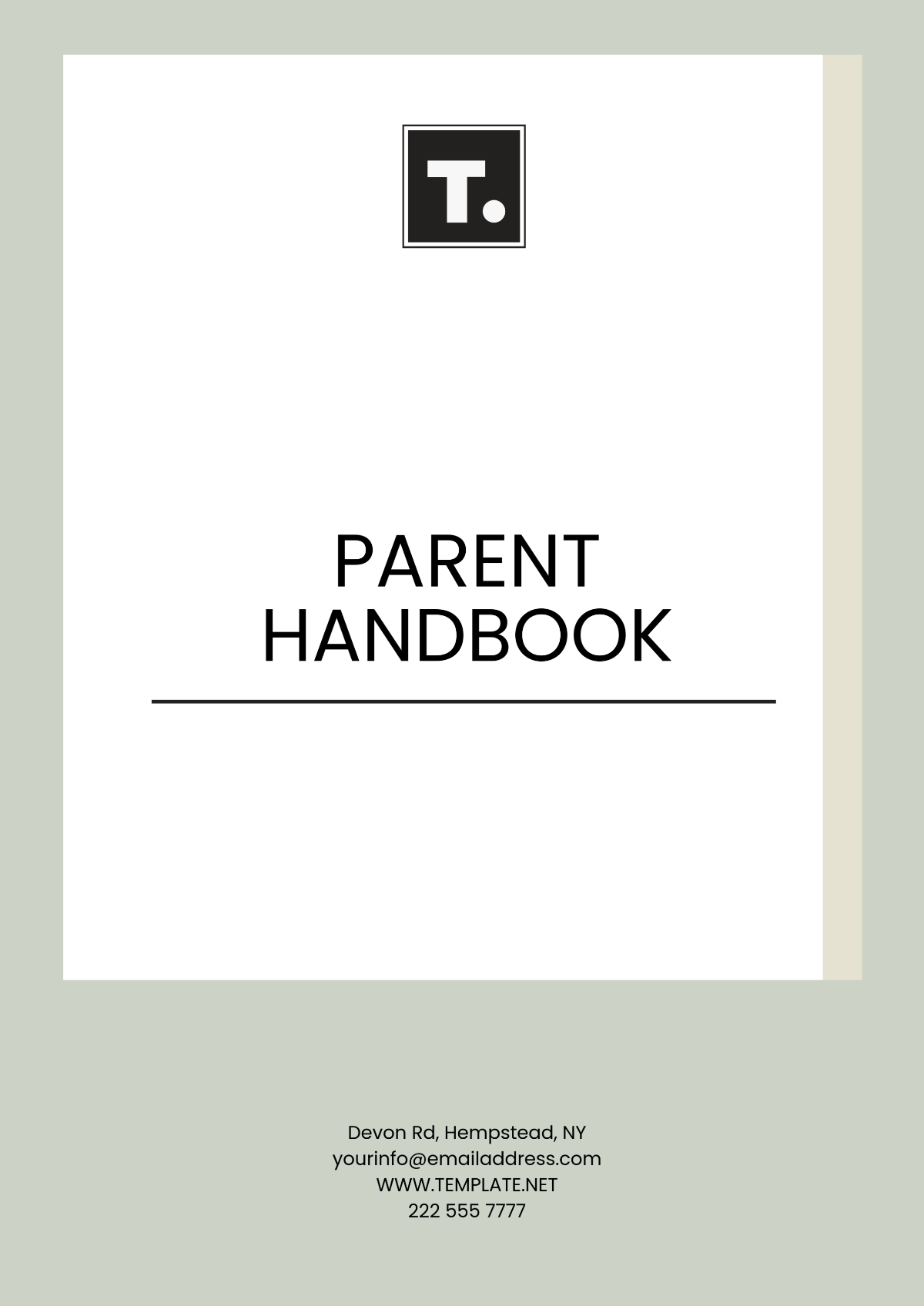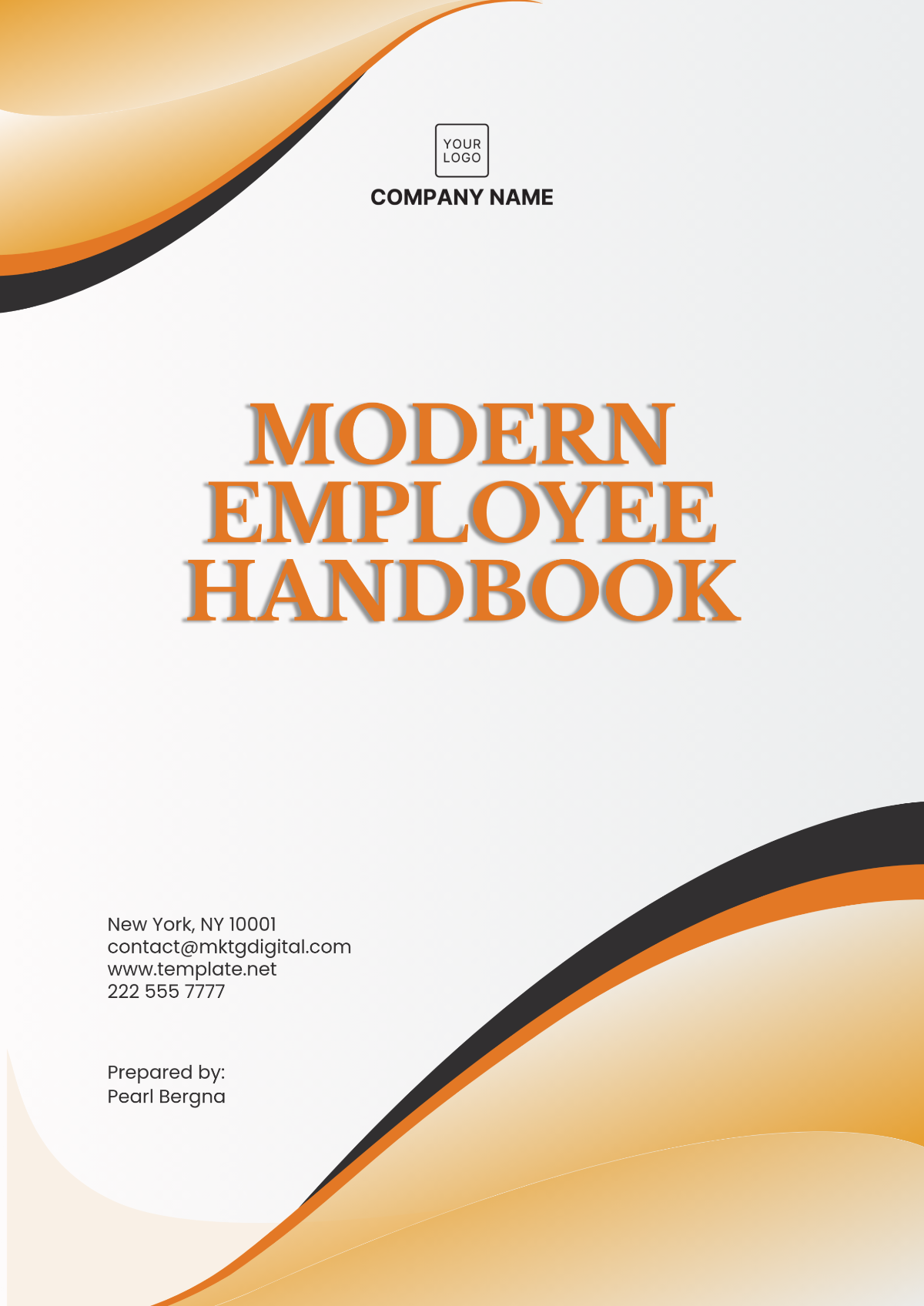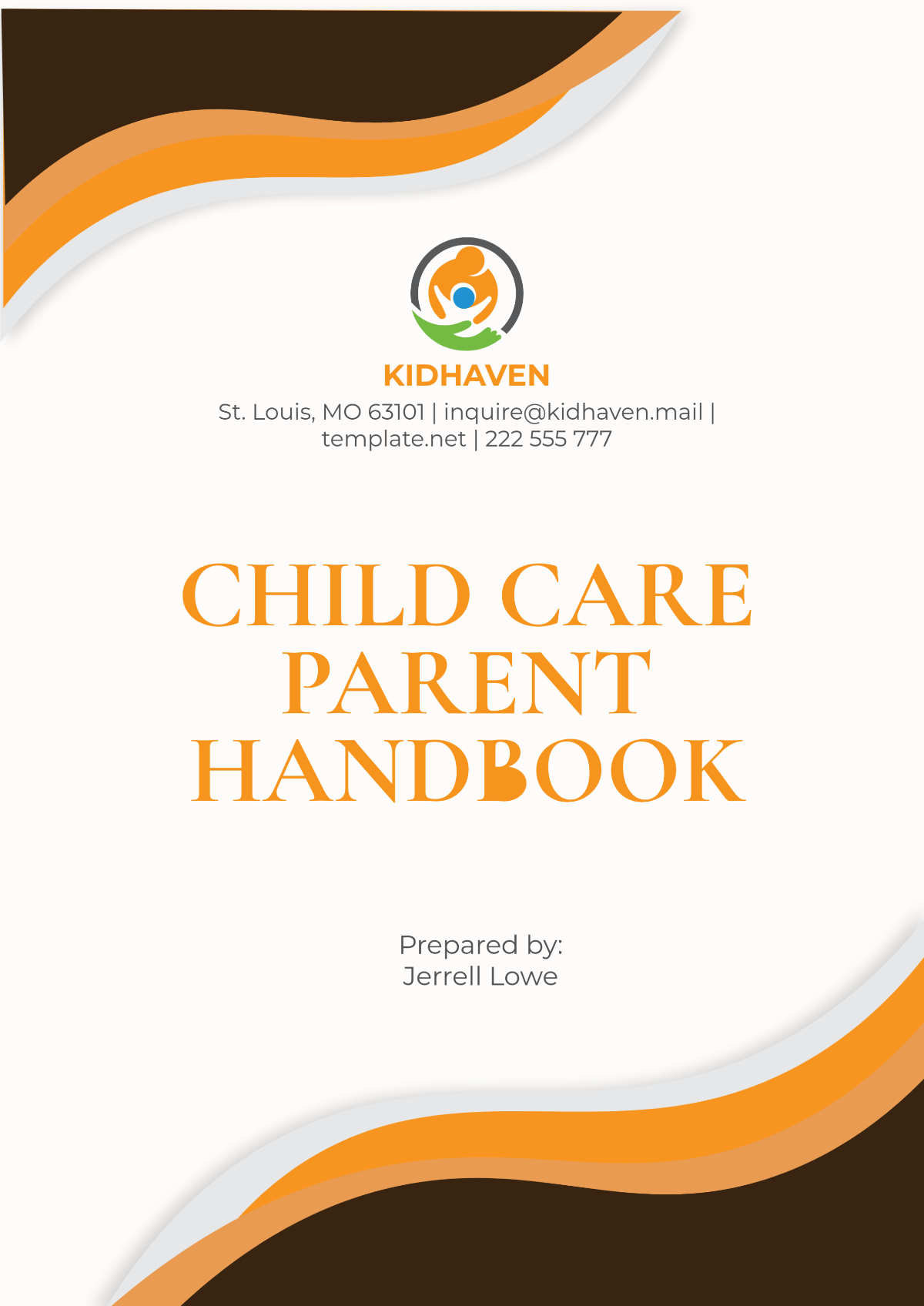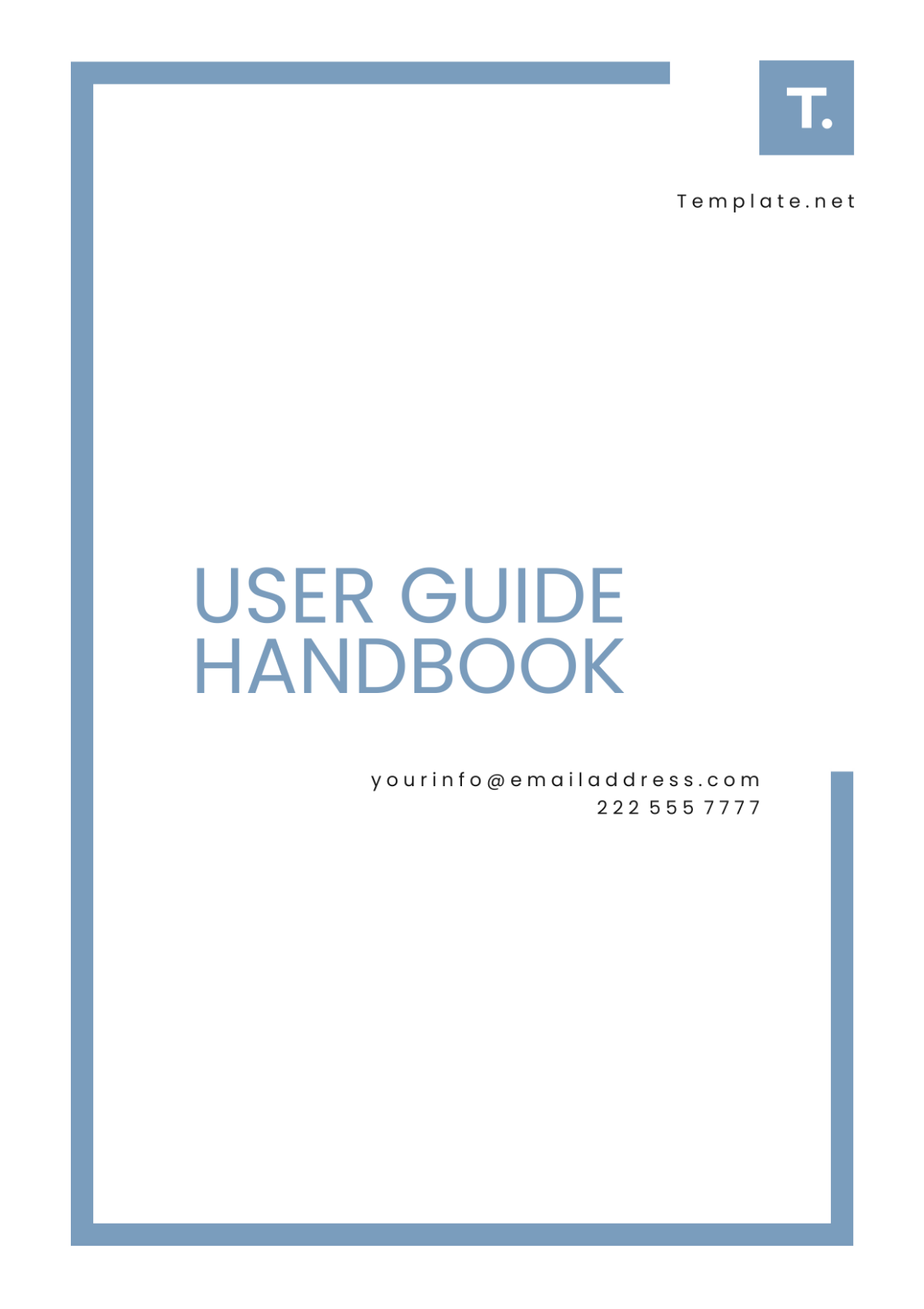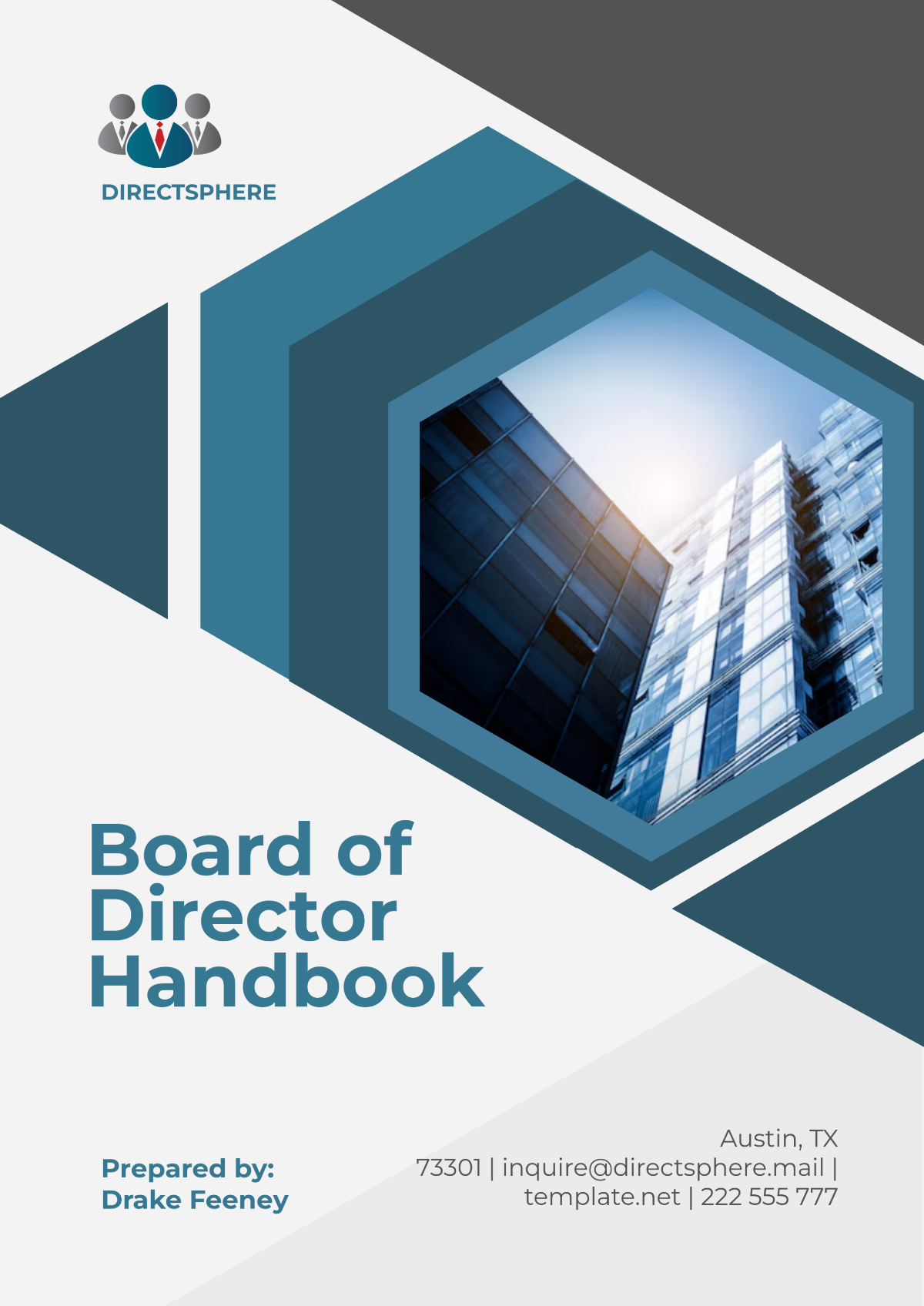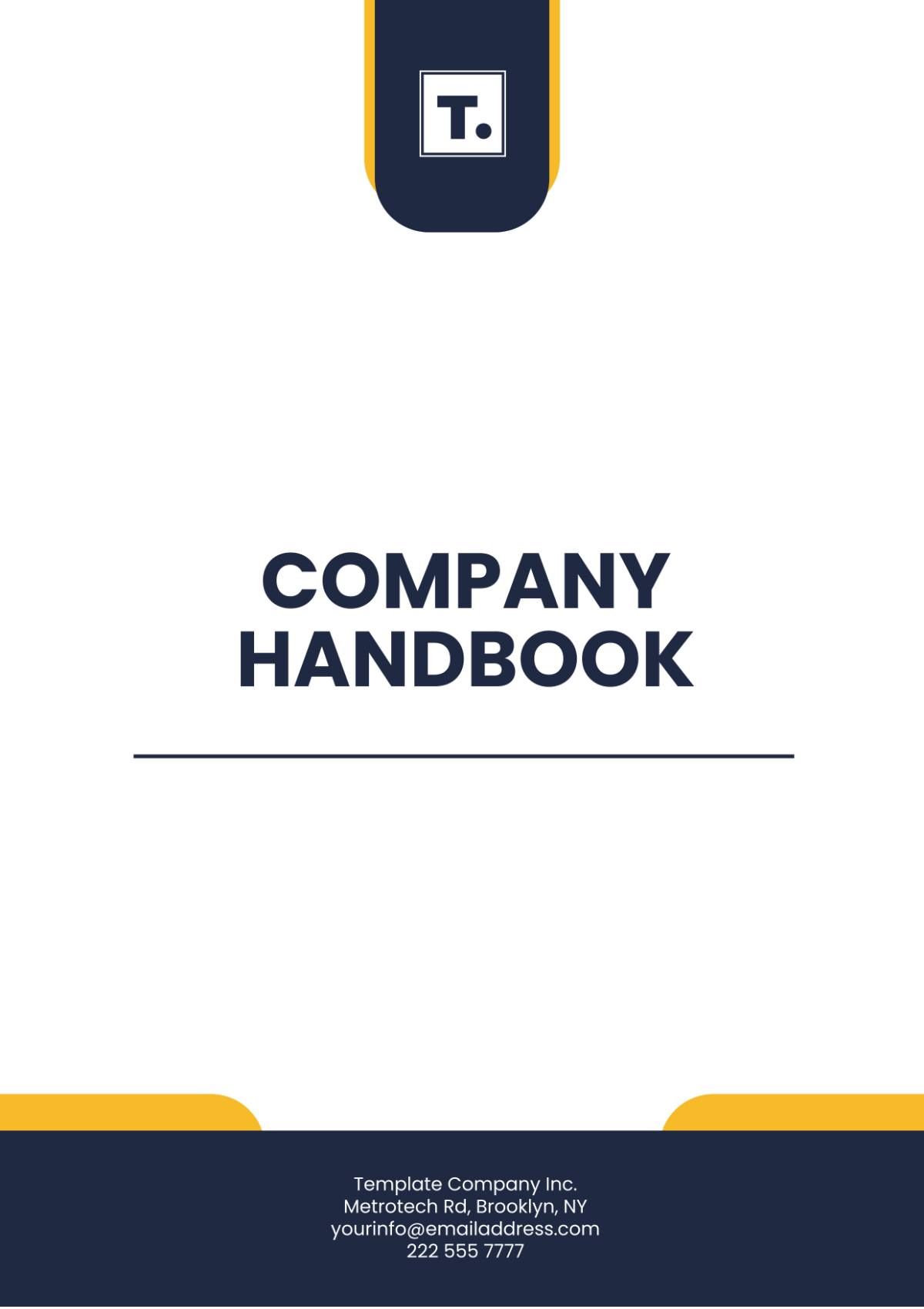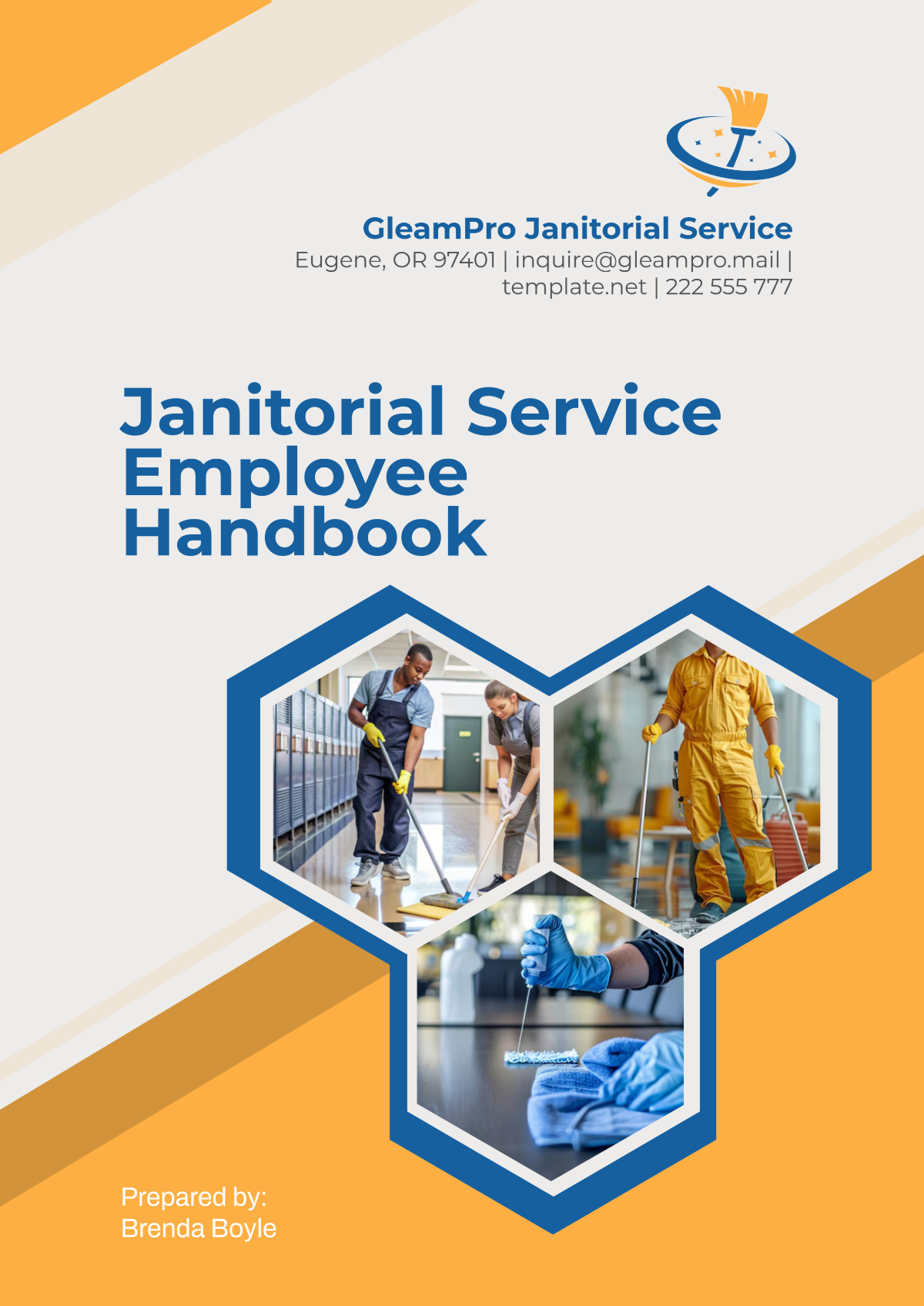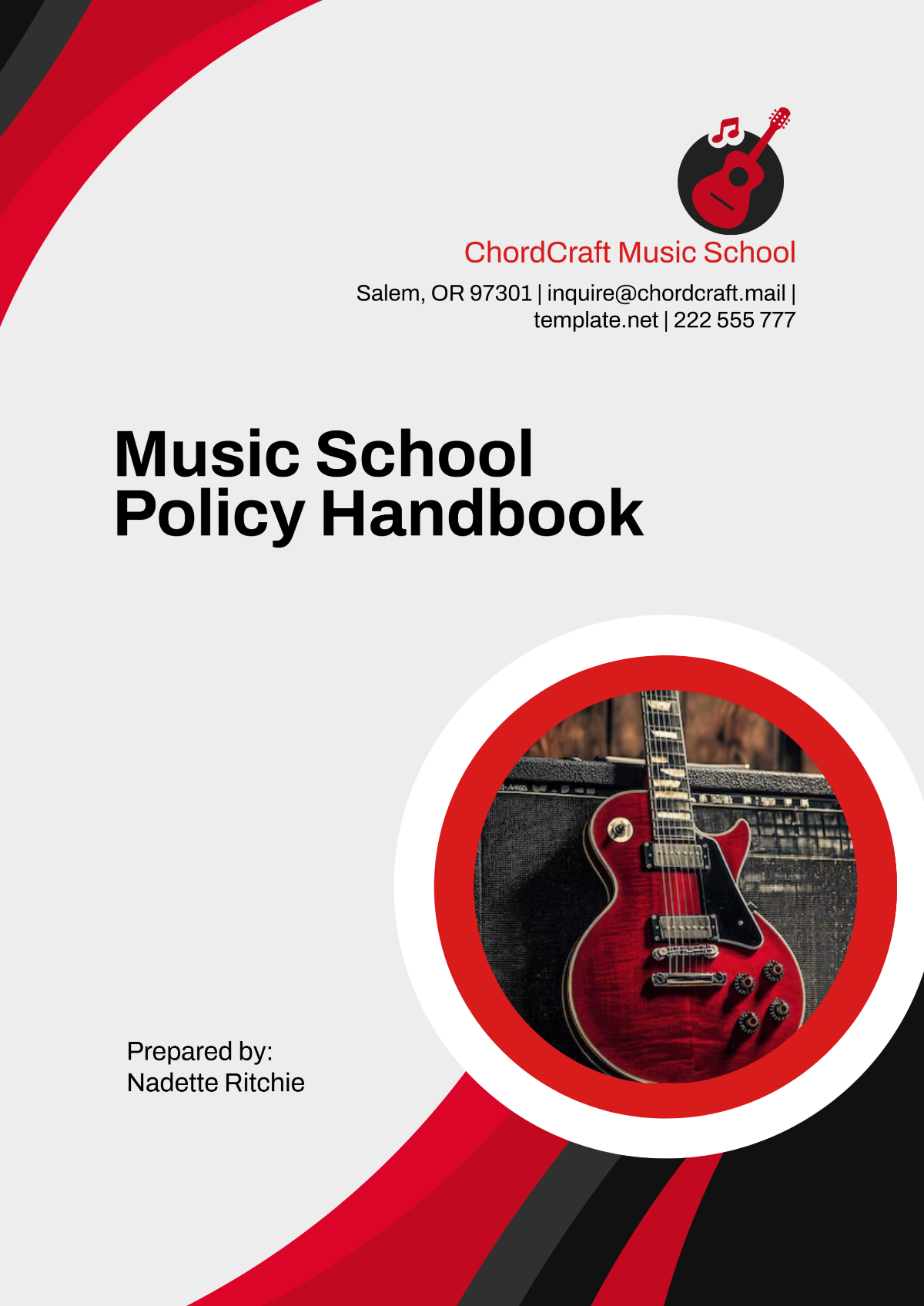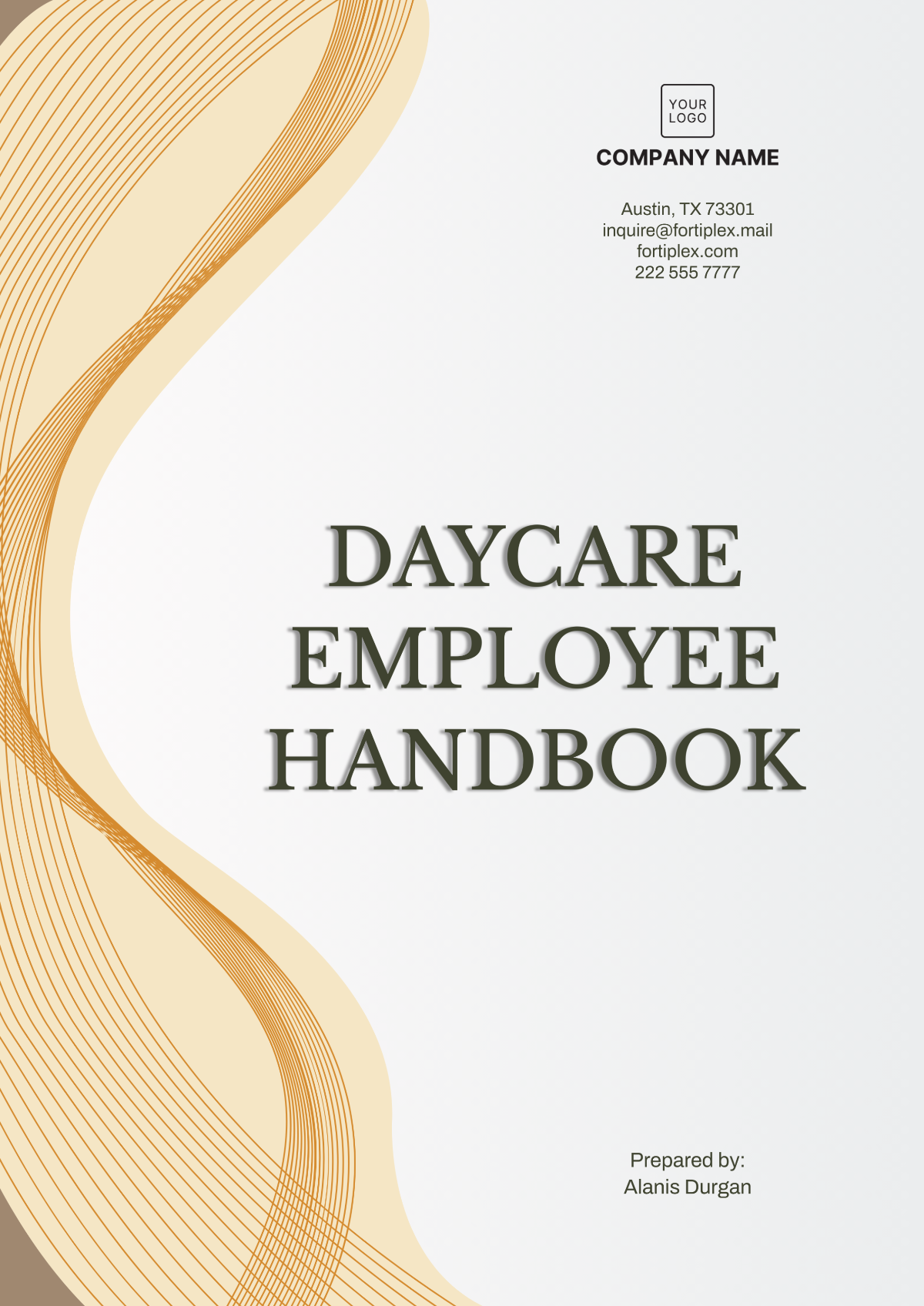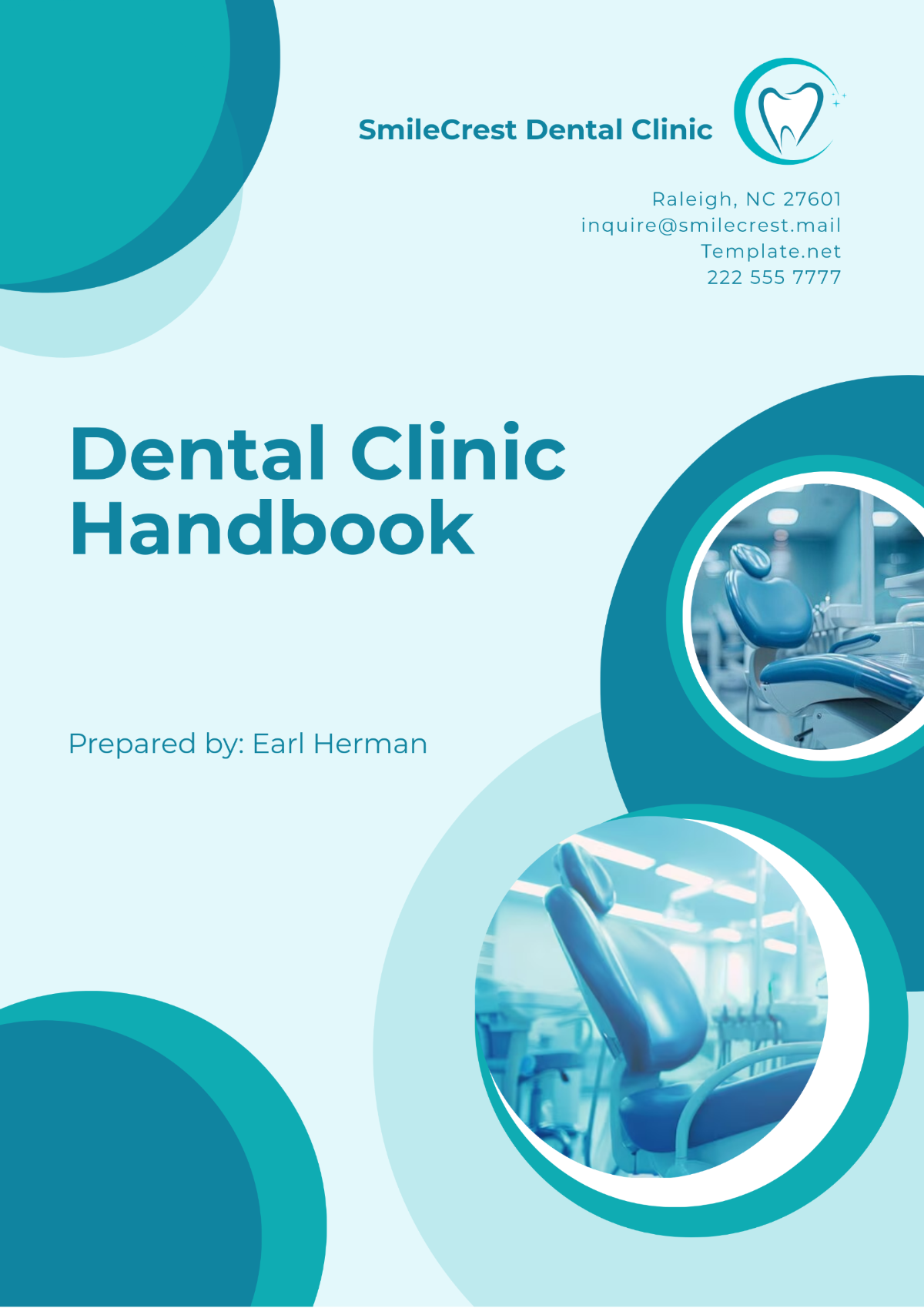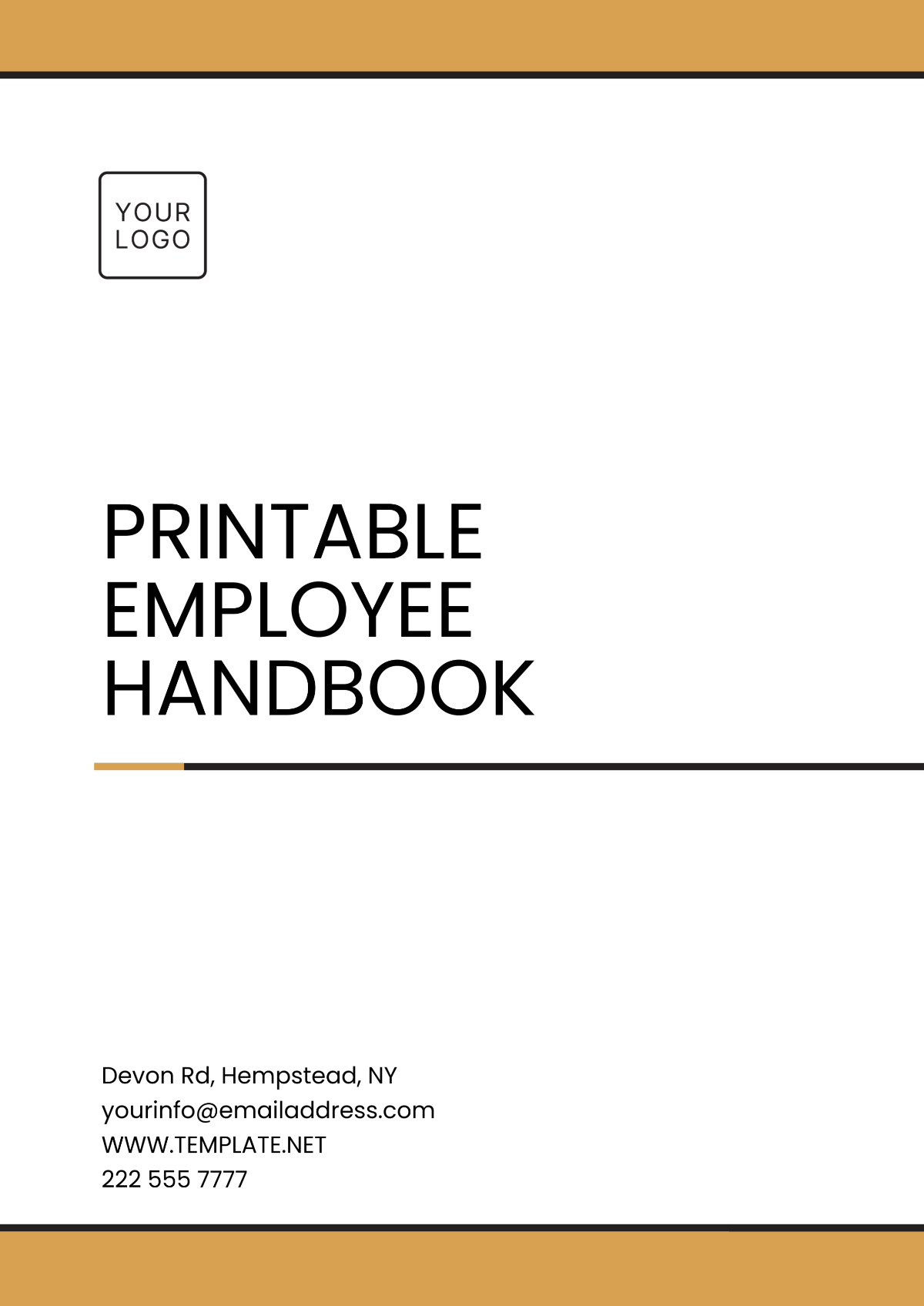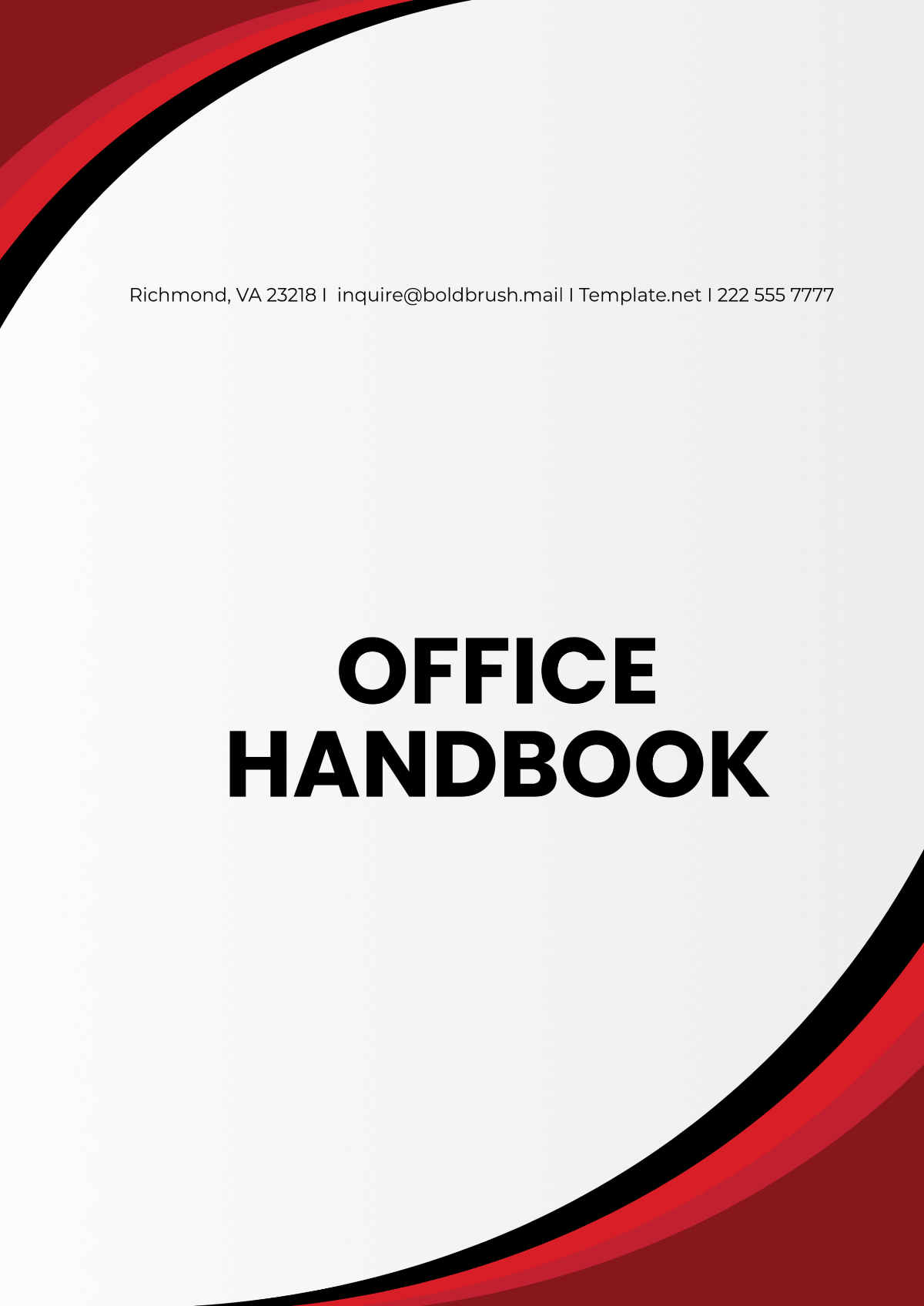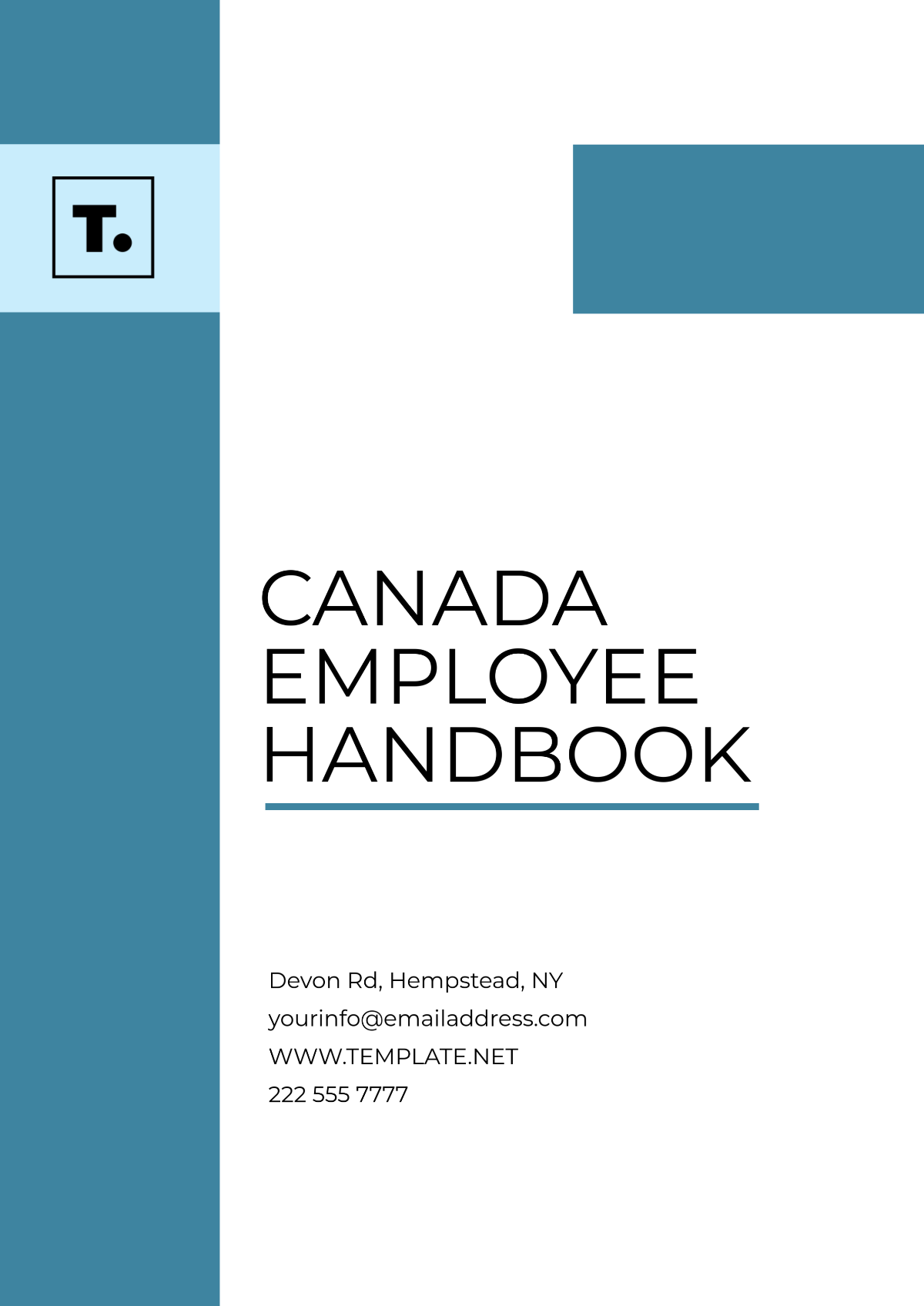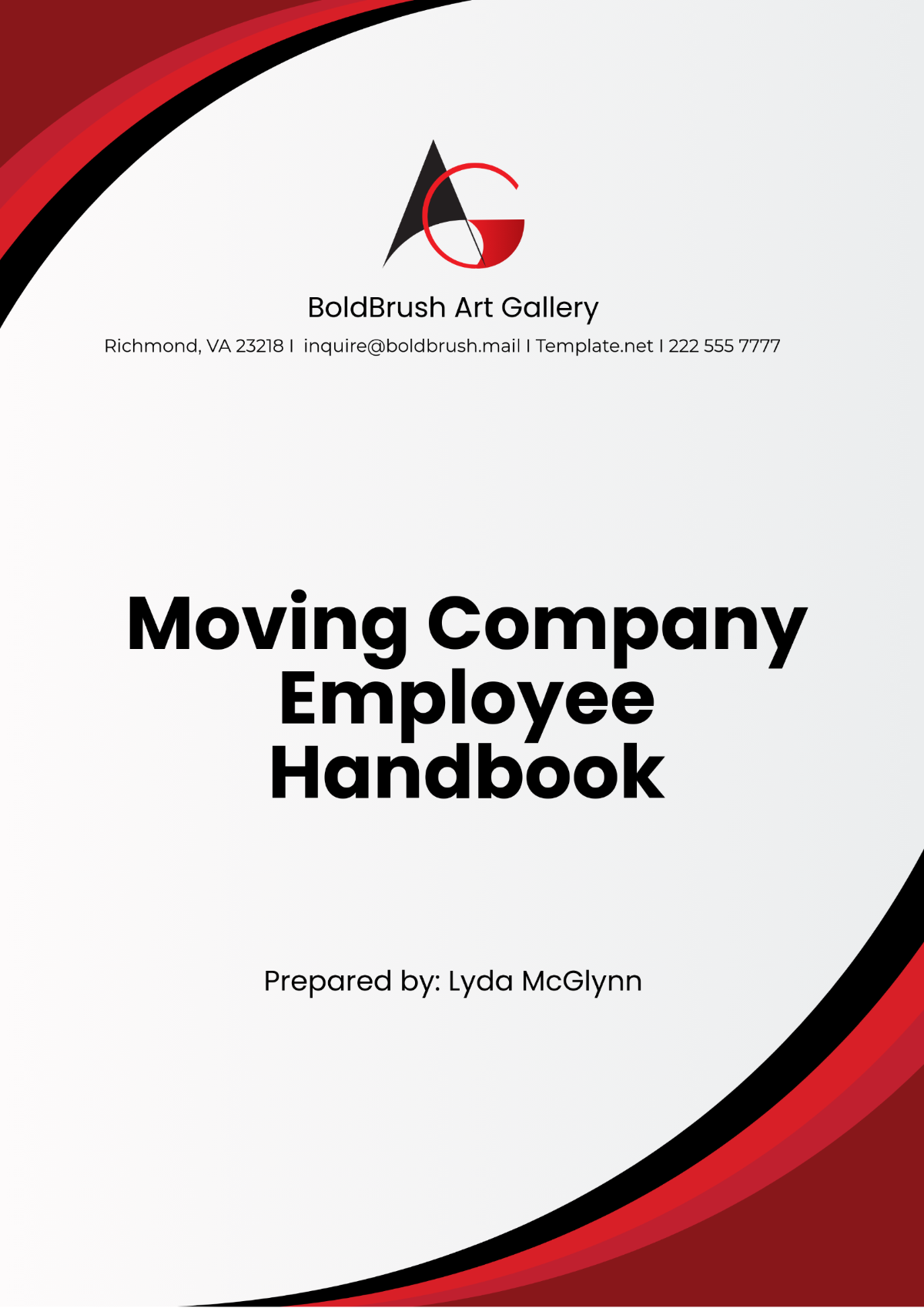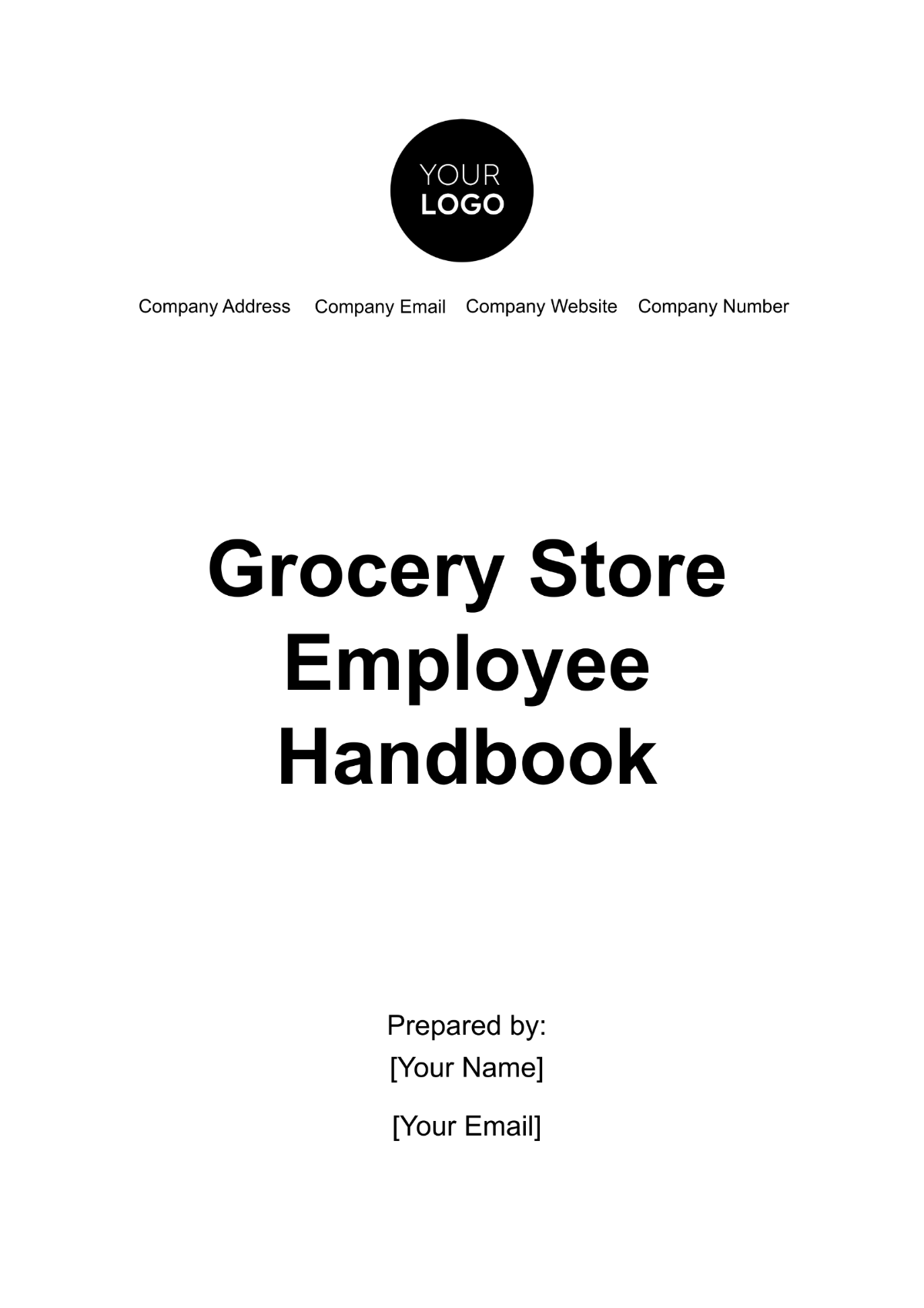Emergency Response Handbook
1. Introduction
1.1. Purpose of the Handbook
The primary purpose of this Emergency Response Handbook is to provide clear and concise guidance to all [Your Company Name] employees, contractors, and visitors in the event of emergencies. This handbook is a vital tool designed to ensure the safety, well-being, and coordinated response of individuals within our organization during critical situations.
In times of crisis, having a well-structured emergency response plan can make all the difference. This handbook equips you with essential information, procedures, and contacts necessary to respond effectively to a wide range of emergency scenarios, including but not limited to fires, medical emergencies, natural disasters, and security threats.
By outlining the procedures and protocols within this handbook, we aim to minimize confusion, ensure the rapid mobilization of resources, and protect lives and property. The safety and security of our employees and stakeholders are of paramount importance, and this handbook serves as a proactive step in fulfilling our commitment to providing a safe work environment.
1.2. Scope
This handbook applies to all [Your Company Name] facilities, offices, and workspaces. It encompasses emergency response procedures that may be required during work hours or outside of regular business hours. All employees and personnel are expected to adhere to the guidelines and protocols outlined herein, promoting a culture of preparedness and safety throughout our organization.
2. Emergency Contact Information
[Your Company Name]
__________________[Your Company Email]
__________________[Your Company Website]
___________________[Your Company Address]
___________________[Your Company Phone Number]
___________________[Your Social Media]
___________________
3. Personal Contact Information
[Your Name]
___________________[Your Personal Email]
___________________[Your User Phone]
___________________
4. Emergency Response Team
Emergency Response Team | Responsibilities |
Team Leader | Directing and overseeing the team's actions during emergencies. |
[Team Leader's Name] | Communicating with authorities and [Your Company Name] leadership. |
Ensuring the safety of all team members and personnel. | |
Initiating emergency protocols and procedures as necessary. | |
Team Members | Supporting the Team Leader in executing emergency response plans. |
[Team Member 1's Name] | Providing assistance and first aid to injured individuals, if required. |
[Team Member 2's Name] | Assisting with the evacuation of personnel to safe assembly points. |
[Team Member 3's Name] | Reporting incidents and relaying information to the Team Leader. |
[Team Member 4's Name] | Familiarizing themselves with the contents of this Emergency Response Handbook. |
Please note that the Team Leader and Team Members may have additional responsibilities specific to their roles, as outlined in their respective job descriptions and training materials.
5. Emergency Procedures
Emergency Procedures | Description |
Fire Emergencies | Comprehensive procedures for handling various types of fire emergencies, including the steps to take when a fire is detected, evacuation protocols, and how to correctly use fire extinguishers. |
Evacuation Procedures | Detailed instructions on safely evacuating the premises during a fire emergency, including evacuation routes, assembly points, and the role of the Emergency Response Team. |
Fire Extinguisher Use | Guidelines for effectively using fire extinguishers, including identifying the correct type of extinguisher, the PASS method (Pull, Aim, Squeeze, Sweep), and when to use them. |
Medical Emergencies | Procedures to follow when medical emergencies occur within [Your Company Name], including how to access first aid kits, administer basic first aid, and respond to situations requiring CPR and automated external defibrillator (AED) usage. |
First Aid Kit Locations | A list of locations where first aid kits are placed throughout the premises, ensuring quick access in case of injuries or medical emergencies. |
CPR and AED Usage | Step-by-step instructions for performing cardiopulmonary resuscitation (CPR) and using automated external defibrillators (AEDs) to aid individuals in cardiac distress. |
Natural Disasters | Detailed response plans for various natural disasters, including earthquake preparedness, hurricane safety measures, tornado response procedures, and steps to take during flooding incidents. |
Earthquakes | Guidance on actions to take during an earthquake, such as "Drop, Cover, and Hold On," and safe evacuation procedures once the shaking stops. |
Hurricanes | Procedures for dealing with hurricane situations, including monitoring weather alerts, securing the premises, and evacuation protocols if necessary. |
Tornadoes | Response guidelines for tornado emergencies, including identifying safe shelter areas and actions to take during a tornado warning. |
Floods | Steps to follow in case of flooding, including evacuation routes, precautions to take, and communication procedures during flood events. |
Security Threats | Protocols for handling security-related emergencies, including intruders, bomb threats, and suspicious packages. |
Intruders | Procedures for dealing with unauthorized intruders, including actions to protect yourself and others and how to alert security personnel. |
Bomb Threats | Response to bomb threats, including immediate actions to take, evacuation procedures, and communication with authorities. |
Suspicious Packages | Guidelines for handling suspicious packages, emphasizing caution, isolation, and reporting to the appropriate authorities. |
6. Emergency Communication
Emergency Communication | Description |
Alert Systems | Information regarding various alert systems used to notify personnel during emergencies. This section covers the activation and recognition of sirens and alarms and the receipt of emergency text messages. |
Sirens and Alarms | Details on the purpose, types, and sounds of sirens and alarms employed to signal different emergencies. It also includes instructions on how to respond when hearing these alerts. |
Text Messages | Information on the use of text messages as a communication method during emergencies. This section includes guidelines for subscribing to emergency notification services and how to interpret and act upon emergency text messages. |
Chain of Communication | An outline of the established communication hierarchy within [Your Company Name] for reporting incidents and receiving updates during emergencies. This section clarifies the roles and responsibilities of employees in maintaining a seamless flow of information. |
Reporting Incidents | Instructions for reporting incidents promptly to the designated authorities or the Emergency Response Team. It includes details on what information to provide and how to communicate critical incidents effectively. |
Receiving Updates | Guidance on how employees can stay informed about the latest developments during an emergency. This includes channels for receiving updates, where to obtain reliable information, and how to ensure that information is up-to-date and accurate. |
7. Evacuation Plans
Section | Description |
Building Evacuation | This section focuses on building evacuation procedures. |
Evacuation Routes | Detailed floor plans and descriptions of primary and secondary evacuation routes. |
Assembly Points | Information on designated assembly points and procedures for check-in and accountability. |
Shelter-in-Place | This section covers sheltering in place procedures when evacuation is not advisable. |
Designated Safe Areas | Description of designated safe areas within the facility, including their characteristics and usage instructions. |
8. Emergency Equipment
Section | Description |
First Aid Kits | This section provides information about the location and contents of first aid kits within our facilities. |
Contents | Detailed list of the contents found in first aid kits, including bandages, antiseptics, gloves, and other essential items. |
Fire Extinguishers | This section focuses on the locations of fire extinguishers throughout the facility. |
Locations | Clear descriptions and floor plans showing the placement of fire extinguishers, ensuring easy identification and access during fire emergencies. |
AED Locations | Information regarding the locations of Automated External Defibrillators (AEDs) within the facility and instructions for their usage. |
Usage Instructions | Step-by-step instructions on how to properly use AEDs, including details on electrode pad placement and administering shocks in cases of cardiac distress. |
9. Resource Management
Section | Description |
Inventory of Emergency Supplies | Identify and list essential emergency supplies (e.g., first aid, fire extinguishers, flashlights, batteries, communication devices). - Determine quantities based on facility size and potential occupants. Indicate storage locations. Regularly check and record expiry dates. - Establish a monitoring and replenishment system. |
Restocking Procedures | Designate responsible individuals or teams for routine inventory checks. - Maintain records of supply usage. - Establish a clear ordering procedure for replacements. - Properly store and rotate supplies. - Train personnel on restocking procedures. |
Equipment Maintenance | Create a maintenance schedule for emergency equipment. - Conduct routine inspections for condition, functionality, and expiry dates. - Maintain documentation of inspections and repairs. - Train designated personnel in equipment maintenance. |
10. Training and Drills
Section | Description |
Employee Training This section focuses on the training of employees to ensure they are prepared for emergencies and capable of responding effectively. | |
Emergency Response Training | Provide comprehensive emergency response training to all employees. - Cover procedures for various types of emergencies, including fires, medical incidents, natural disasters, and security threats. - Ensure that employees understand their roles and responsibilities during emergencies. |
CPR and First Aid Training | Offer CPR and First Aid training to employees to equip them with life-saving skills. - Ensure that employees know how to administer basic first aid, perform CPR, and use automated external defibrillators (AEDs) when required. - Conduct regular refresher courses to maintain proficiency. |
10.1. Regular Drills
Section | Description |
Regular Drills | This section emphasizes the importance of conducting regular emergency drills to test the readiness and response of personnel. |
Fire Drills | Conduct periodic fire drills to assess the readiness of employees to evacuate safely. - Simulate different fire scenarios and evaluate the effectiveness of evacuation routes and assembly points. - Review and update the fire drill procedures based on feedback and findings. |
Evacuation Drills | Organize evacuation drills to ensure that employees are familiar with evacuation procedures. - Practice various scenarios, including shelter-in-place and external evacuation. - Evaluate the efficiency of assembly points and the coordination of the Emergency Response Team. - Use drill outcomes to refine evacuation procedures. |
11. Incident Reporting
Section | Description |
Reporting Procedures | This section outlines the procedures for reporting incidents within your organization to ensure a timely and comprehensive response. |
Incident Report Form | Provide an incident report form to document and report incidents. - This form should be completed whenever an incident occurs and submitted as per organizational guidelines. |
Date and Time | Enter the date and time when the incident occurred. - Ensure accuracy in recording the incident's timing to aid in investigations and response. |
Location | Specify the exact location of the incident, including the facility, building, floor, and room if applicable. - Precise location details are crucial for responding promptly and effectively. |
Description of Incident | Provide a detailed description of the incident, including what happened, the sequence of events, and any contributing factors. - Be clear and concise to facilitate understanding and analysis. |
Witnesses | List the names and contact information of any witnesses to the incident. - Witnesses may provide valuable insights and corroborate details of the event. |
Financial Considerations | In this section, record any financial considerations related to the incident. Include the amount, currency format (e.g., [$000.00]), and the date (e.g., [Month Day Year]). |
Incident Report Form
Field | Information |
Date and Time: | [Enter Date and Time] |
Location: | [Specify Location] |
Description of Incident: | [Provide a detailed description of the incident, including what happened, the sequence of events, and any contributing factors. Be clear and concise.] |
Witnesses: | [List the names and contact information of any witnesses to the incident.] |
Financial Considerations: | Amount: [$000.00] [Date: Month Day Year] |
12. Conclusion
As we conclude this Emergency Response Handbook, we want to underscore the critical role each employee, contractor, and visitor plays in maintaining a safe and secure workplace. The procedures and guidelines outlined herein are not merely words on paper; they are a collective commitment to our safety and well-being.
In times of crisis, your knowledge of this handbook and your adherence to the provided procedures can make a significant difference. Whether it's responding to a fire, providing first aid, or evacuating the premises, your actions can help protect lives and property.
Remember, safety is everyone's responsibility. Each of us must be prepared to act calmly and responsibly during emergencies, following the protocols outlined in this handbook. We encourage you to familiarize yourself with its contents, participate in training, and always be vigilant for potential risks.
Together, we can create a safer work environment and ensure the well-being of all members of our organization. Your commitment to these procedures is greatly appreciated.
Handbook Updates
Our commitment to safety extends beyond the initial creation of this Emergency Response Handbook. To ensure its continued effectiveness, we recognize the importance of regular updates and improvements. The safety landscape can change, and new information may become available that can enhance our emergency response procedures.
We encourage all users of this handbook to be proactive in reporting any discrepancies, outdated information, or suggestions for improvement to the designated authorities. Your input is valuable, as it helps us maintain the handbook's accuracy and relevance.
The handbook will be reviewed and updated as needed to reflect the latest best practices and changes in our organization. It is our goal to provide you with the most current and reliable information to support your preparedness and response efforts.
Thank you for your commitment to safety and for being an active participant in the ongoing enhancement of our emergency response procedures. Together, we can ensure a safer and more secure future for our organization.
